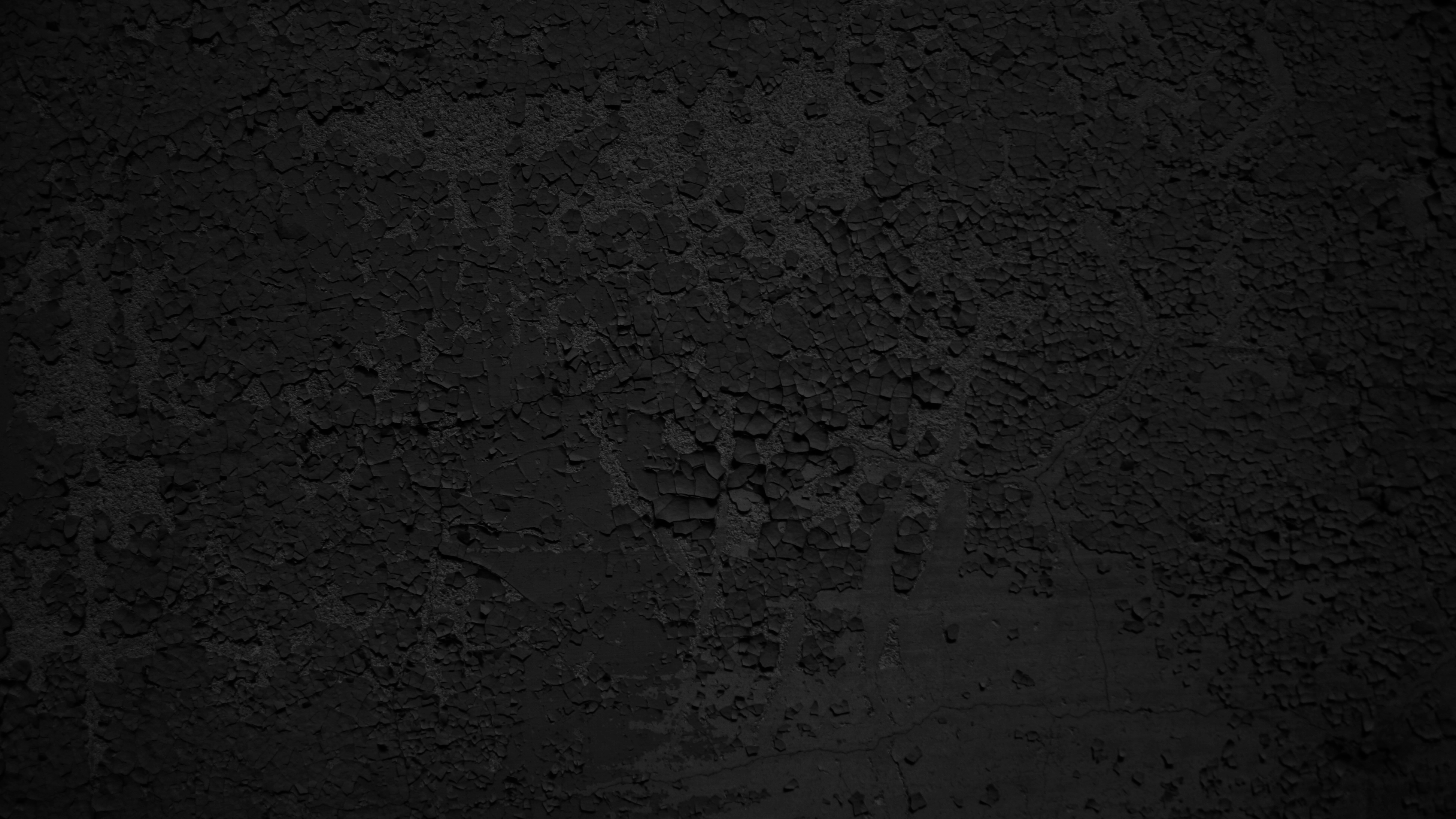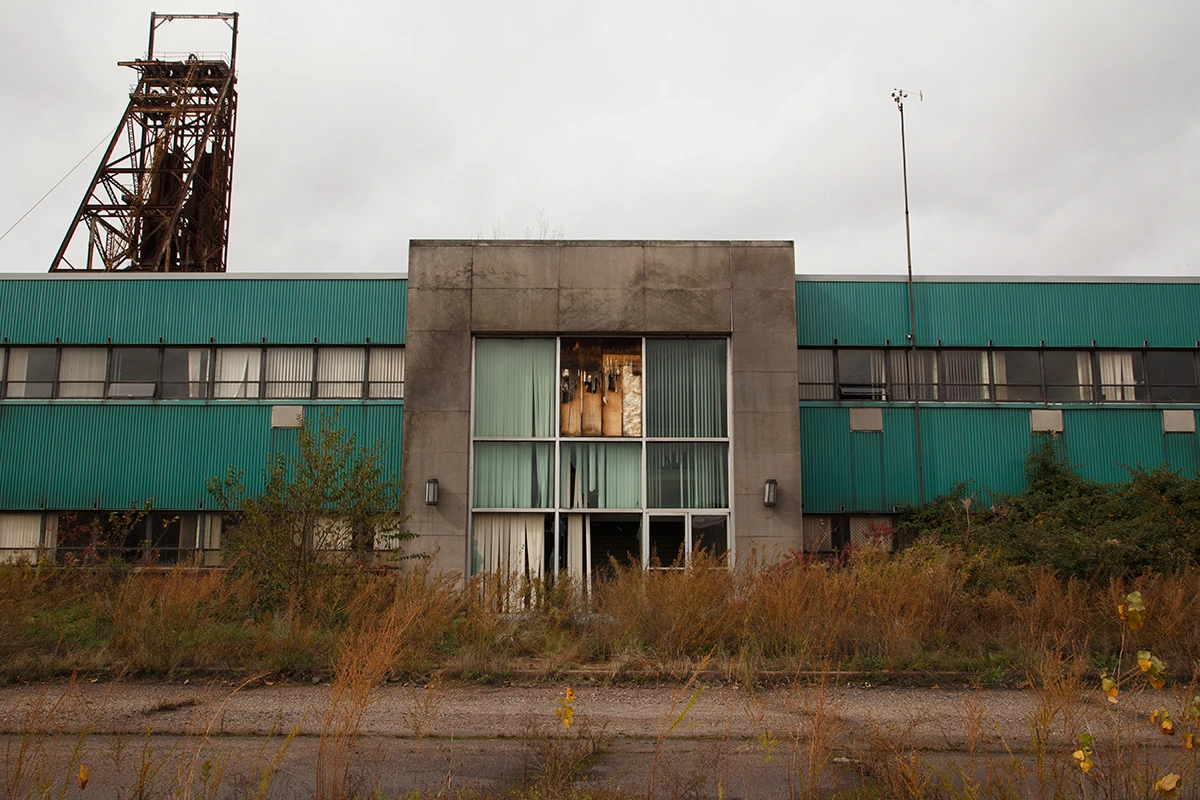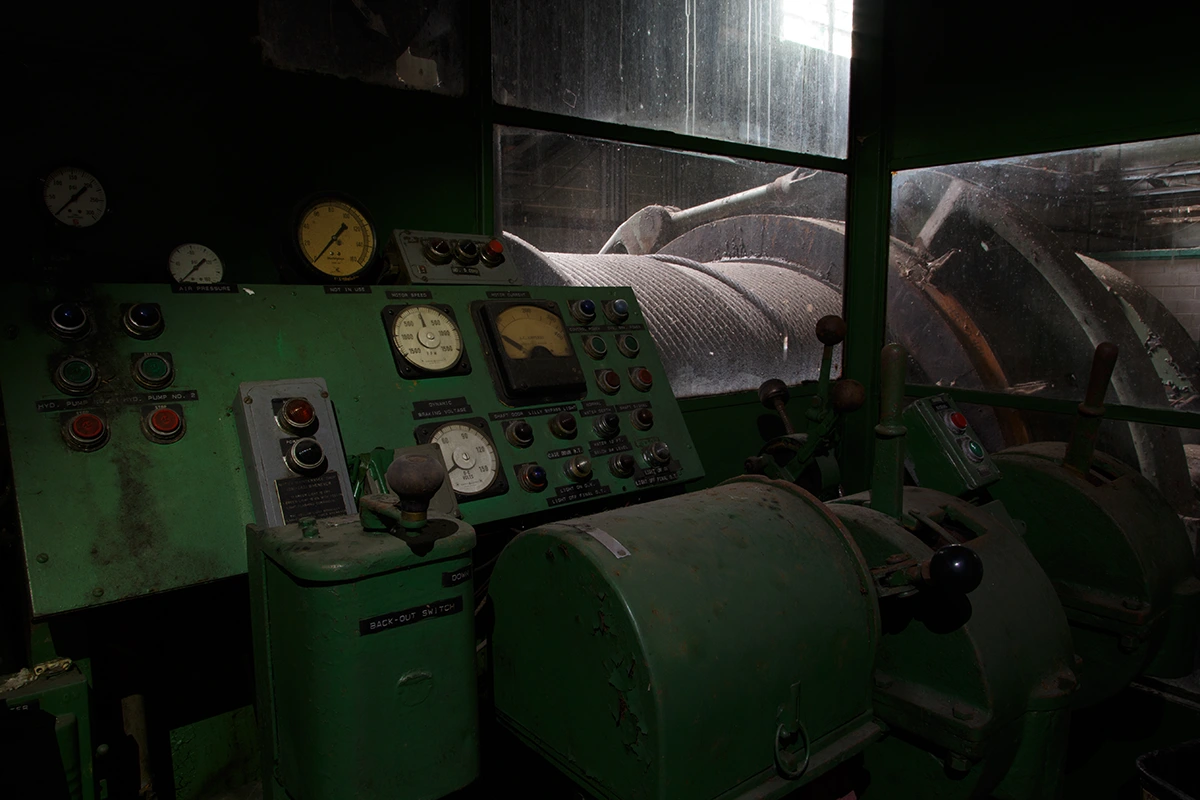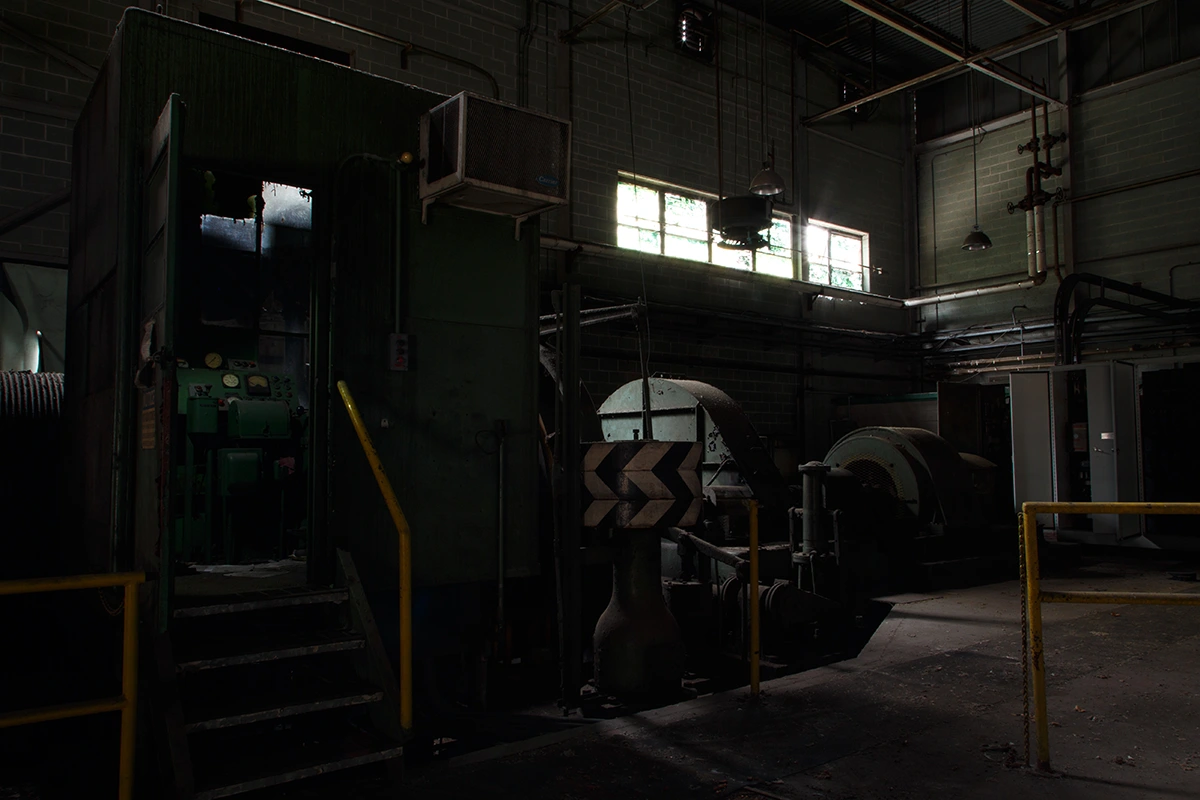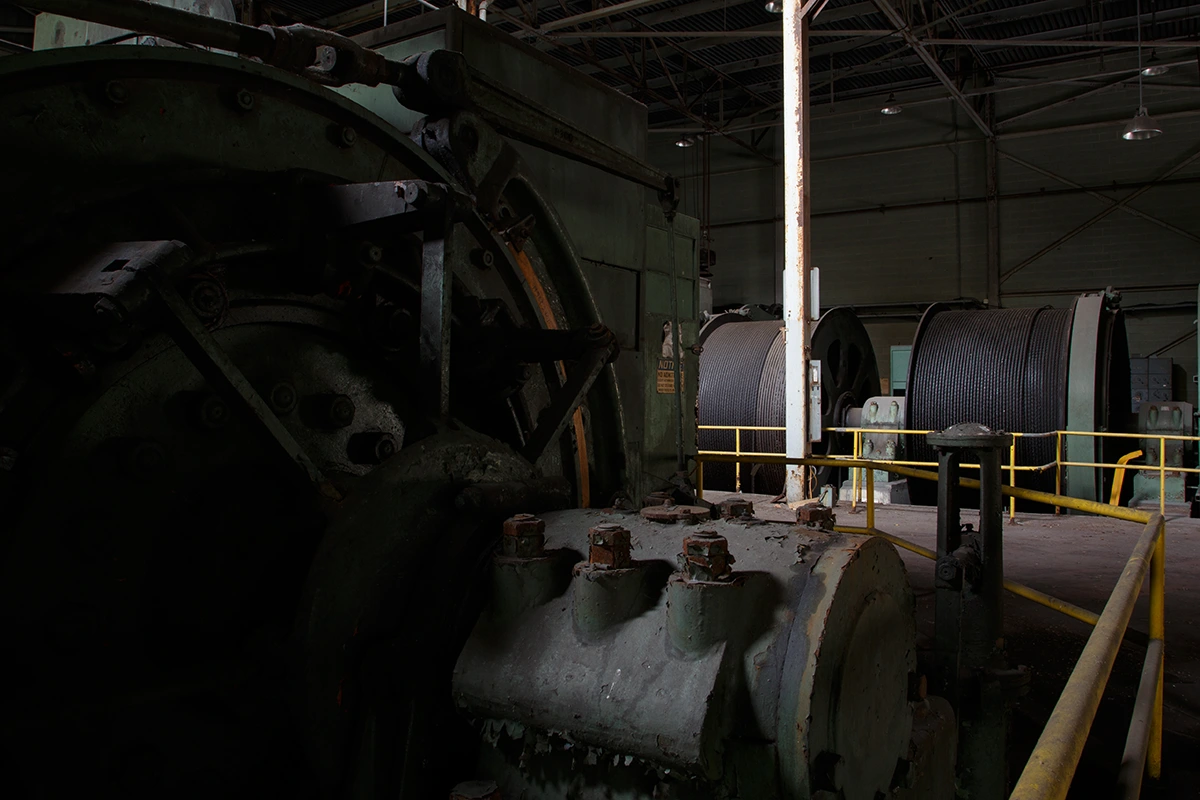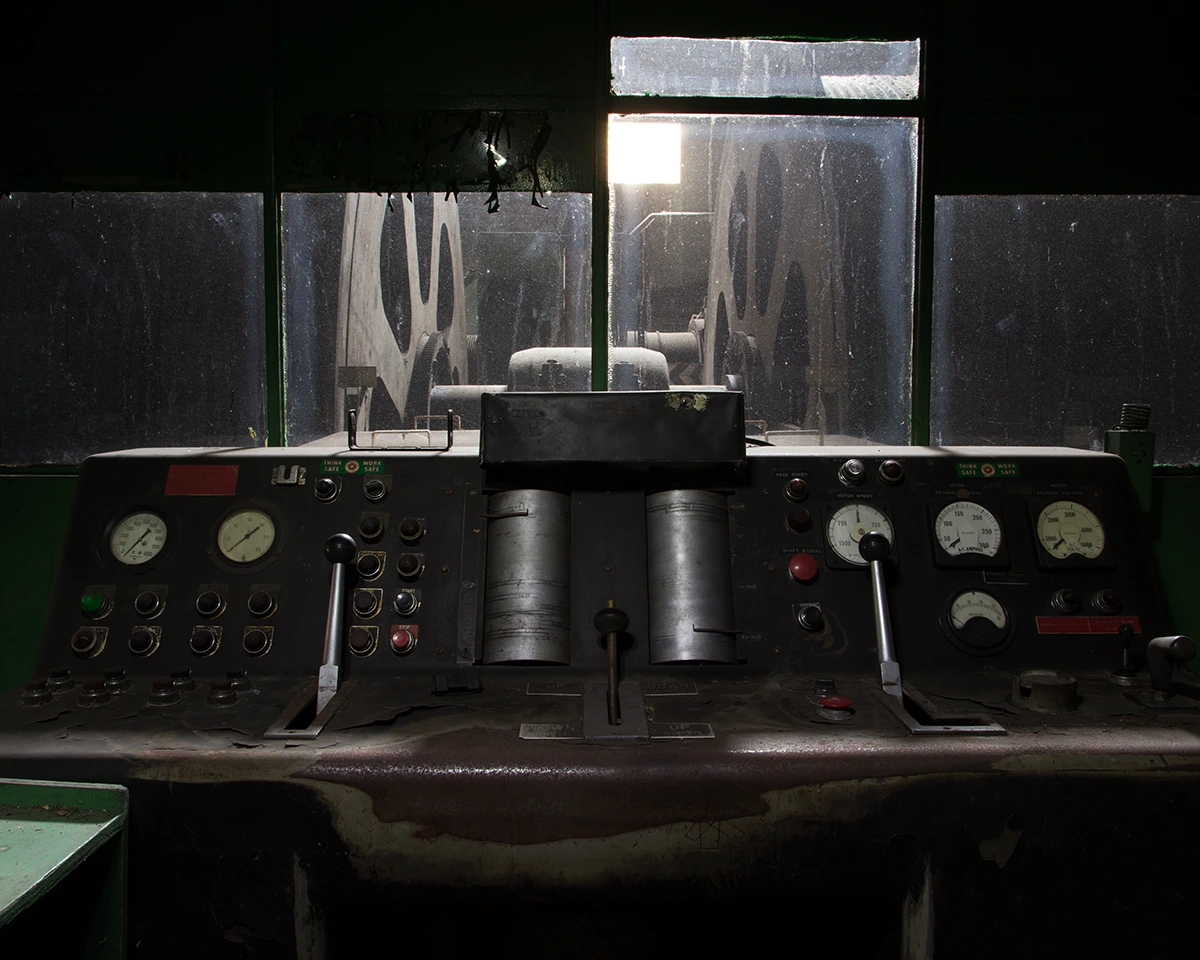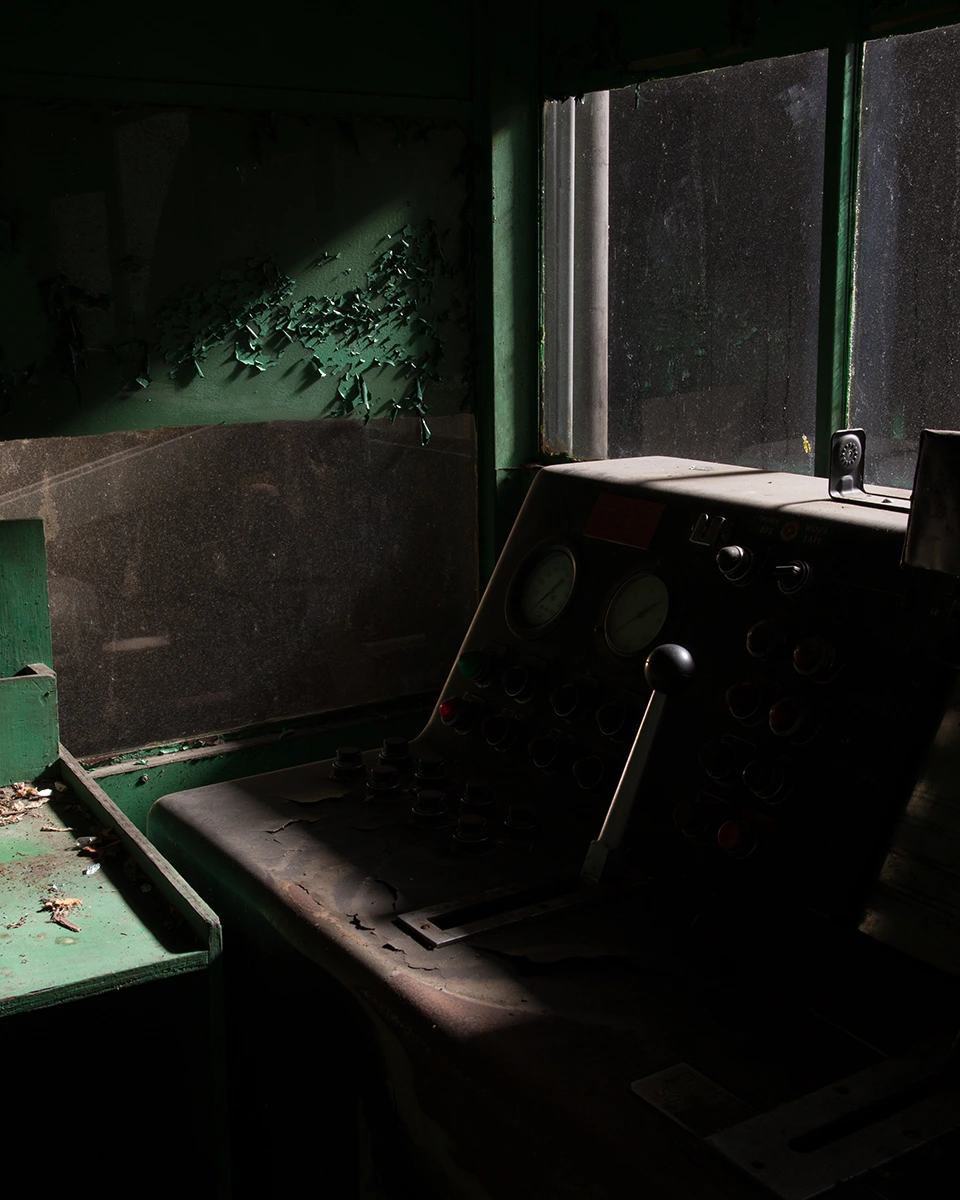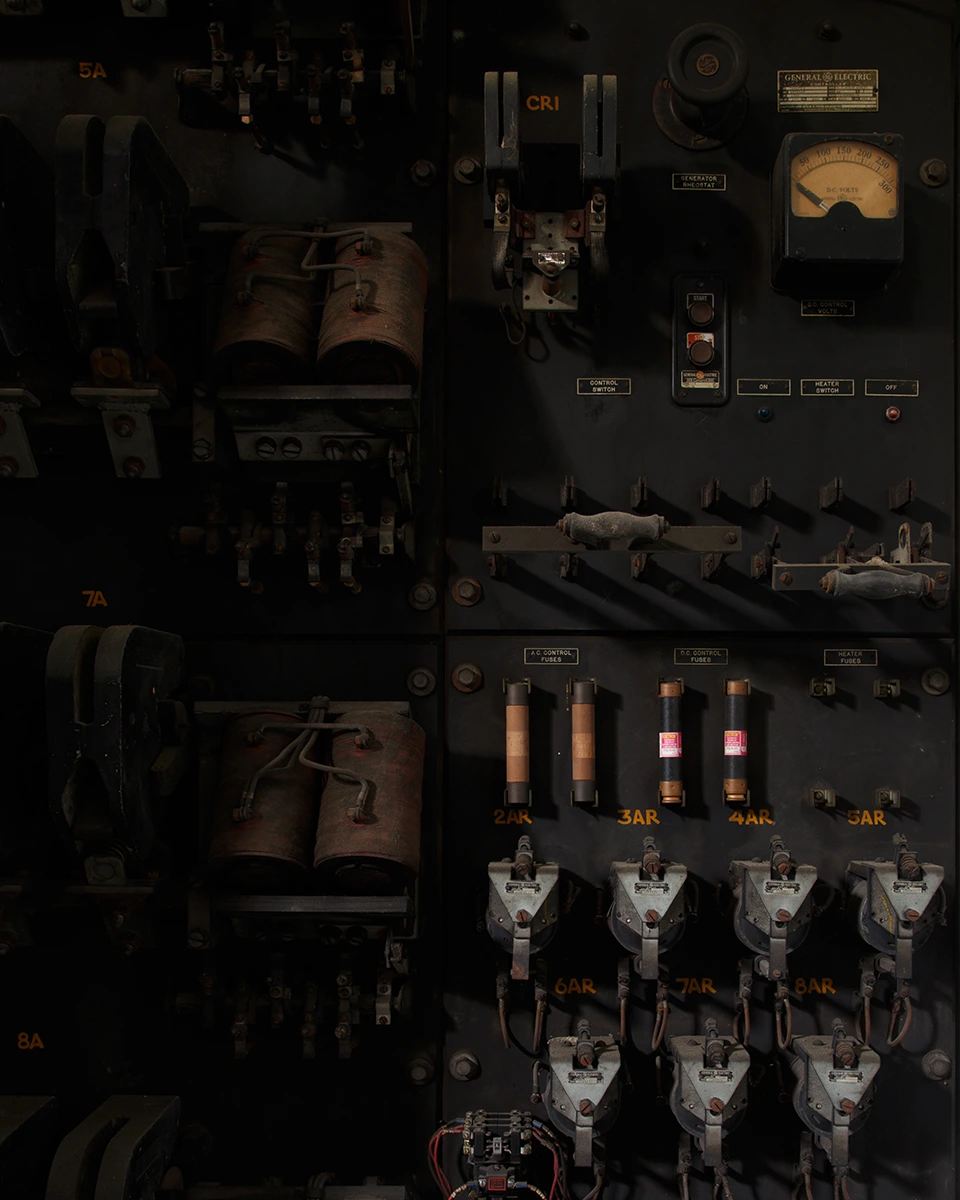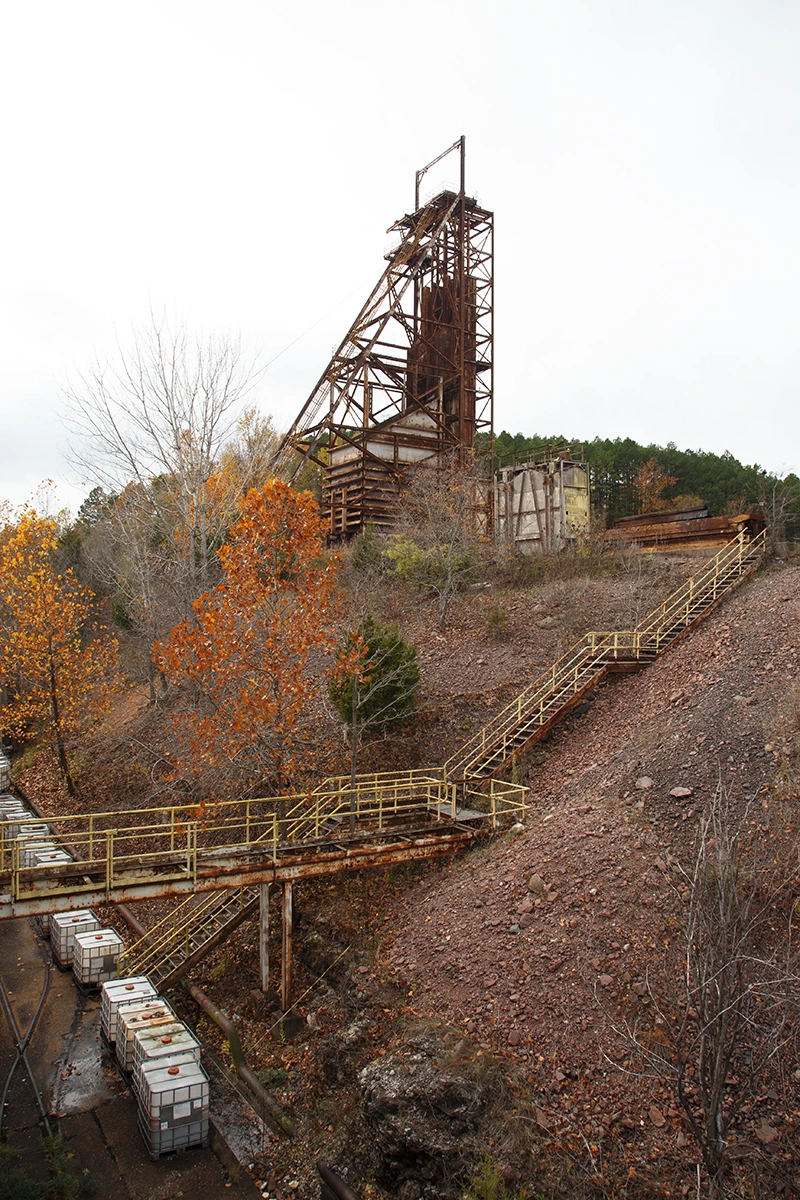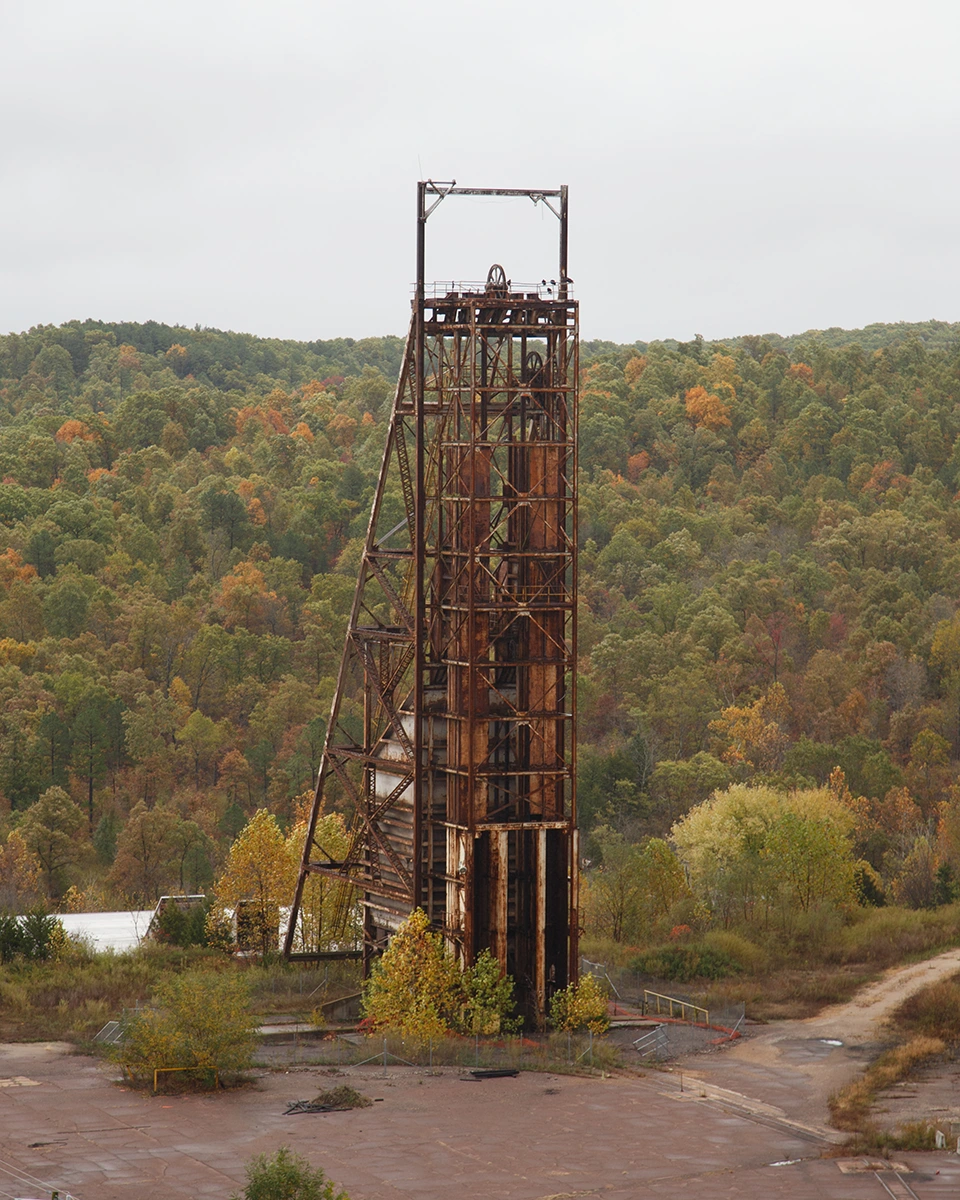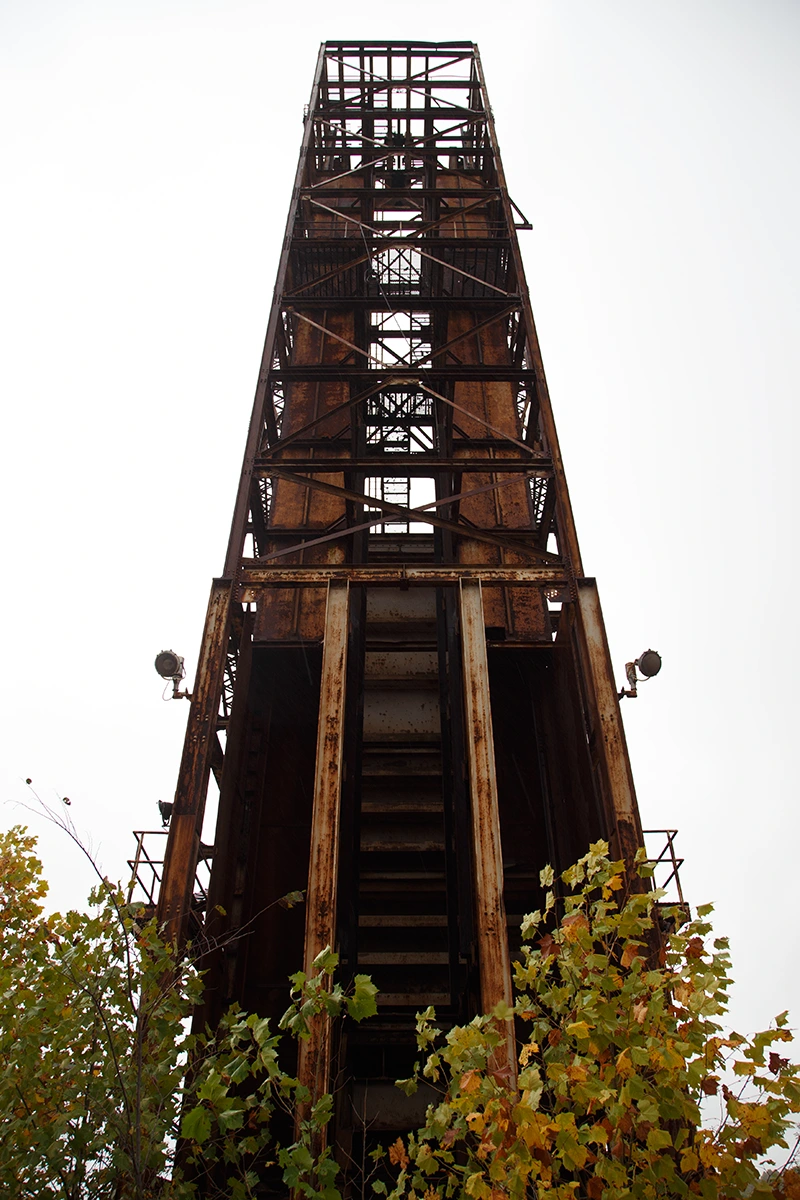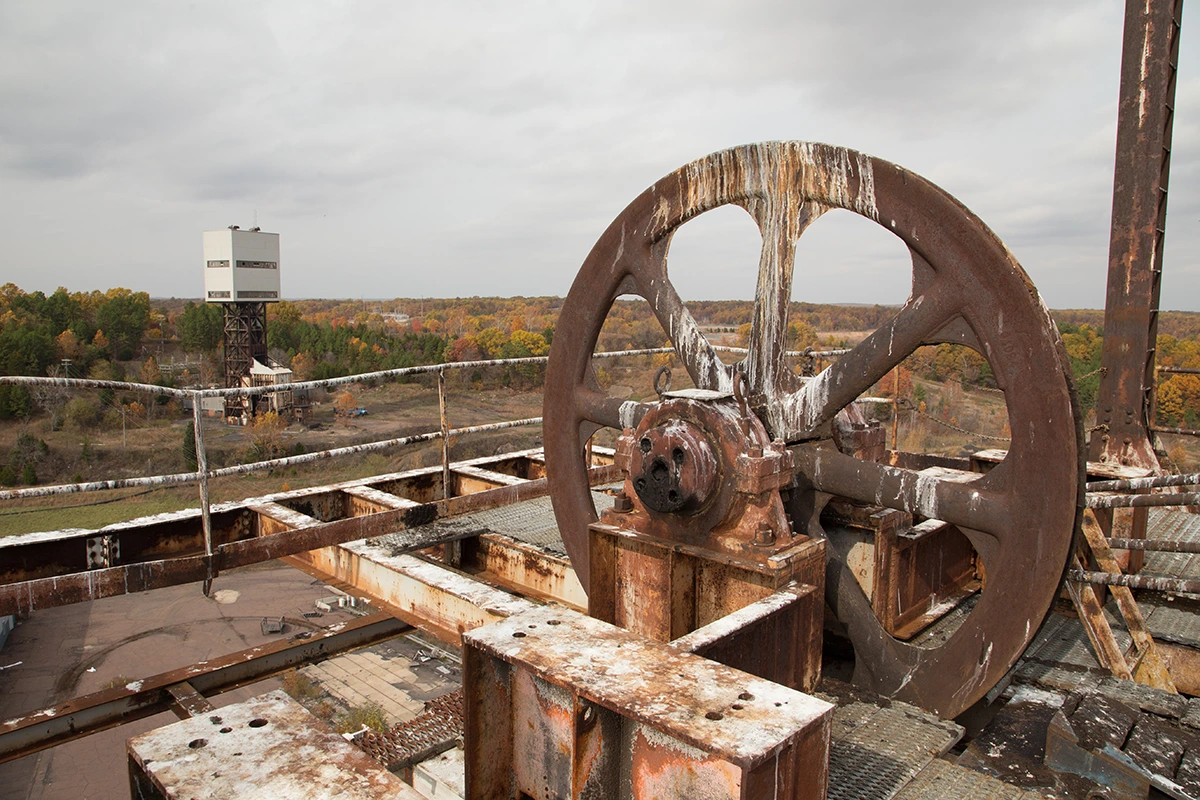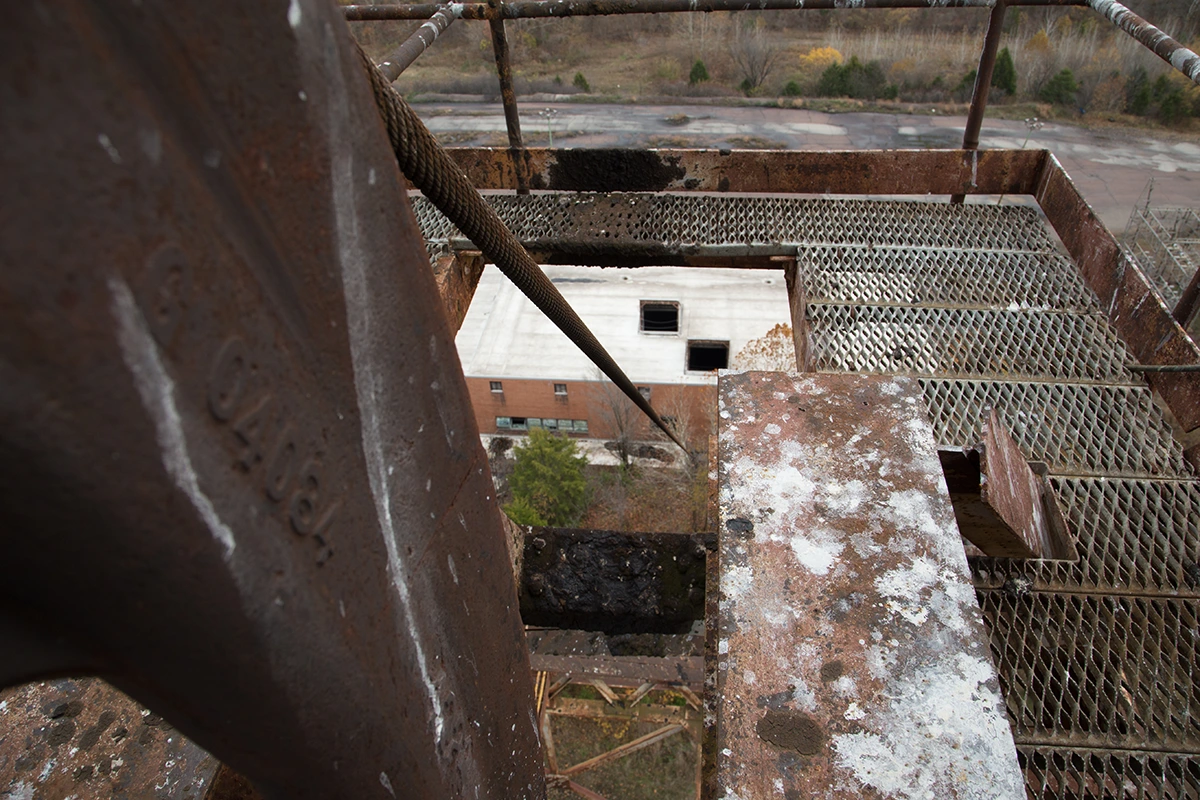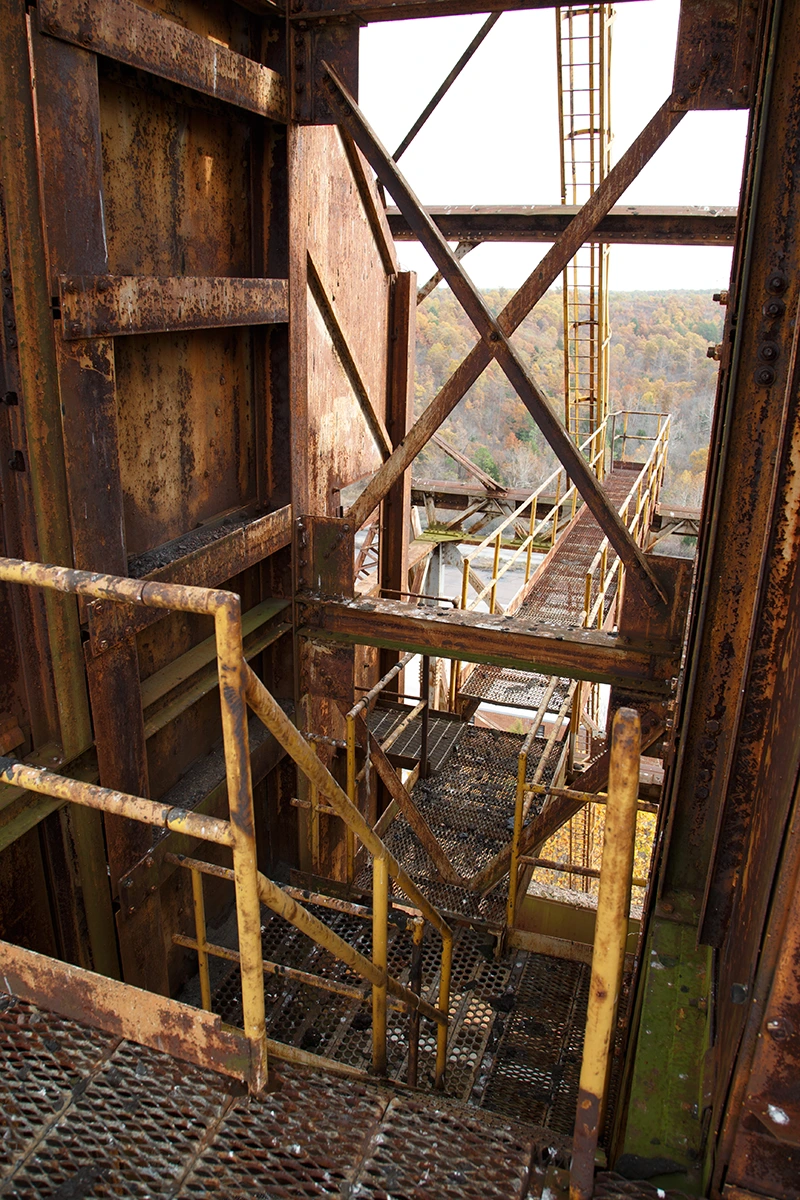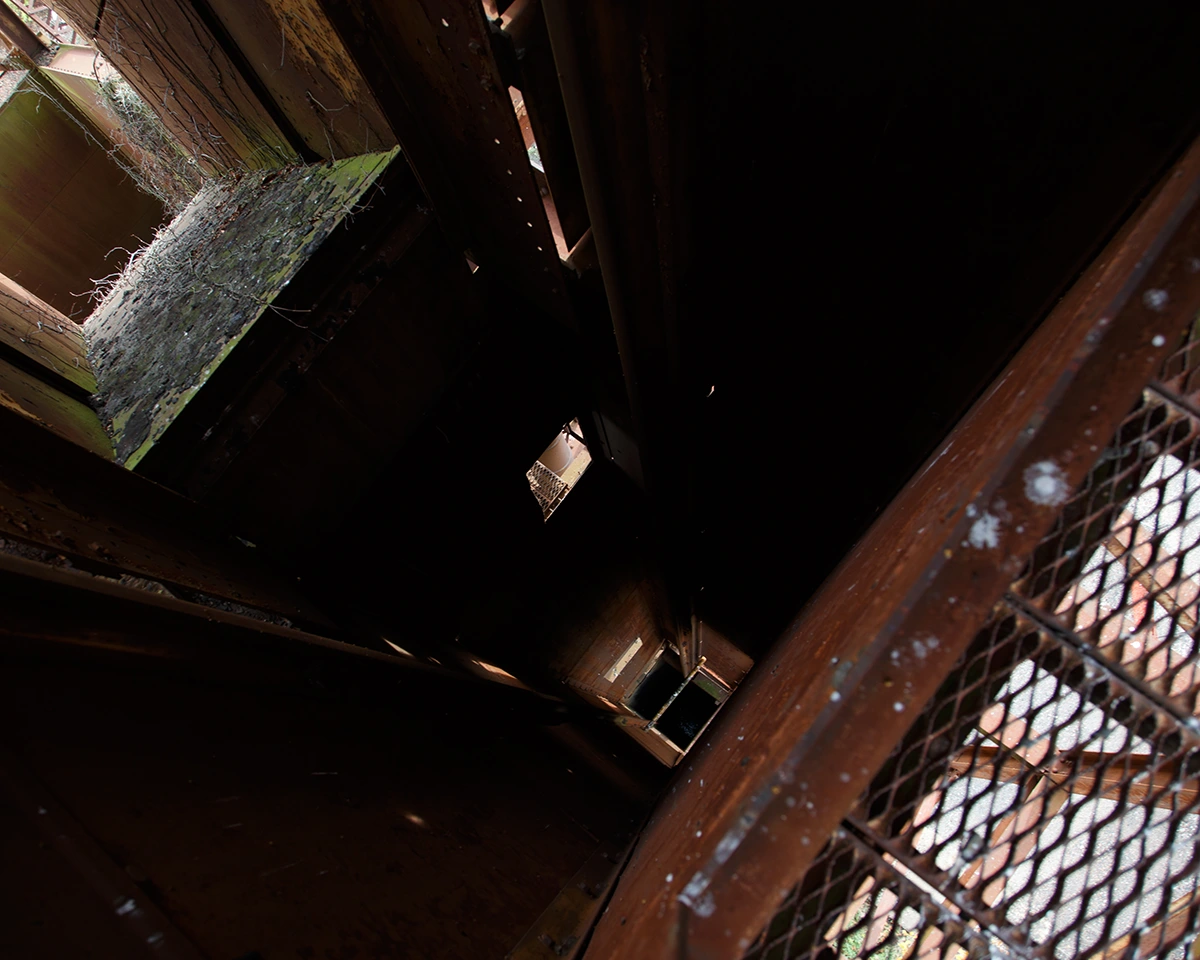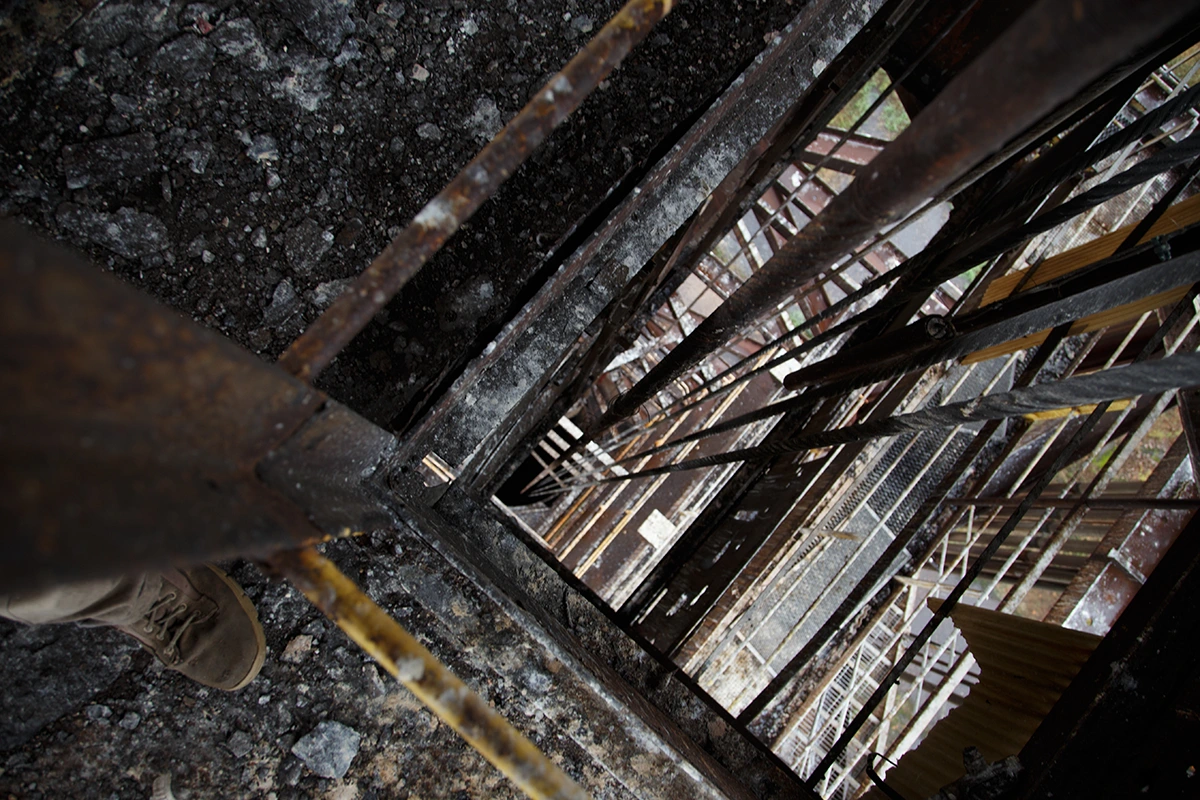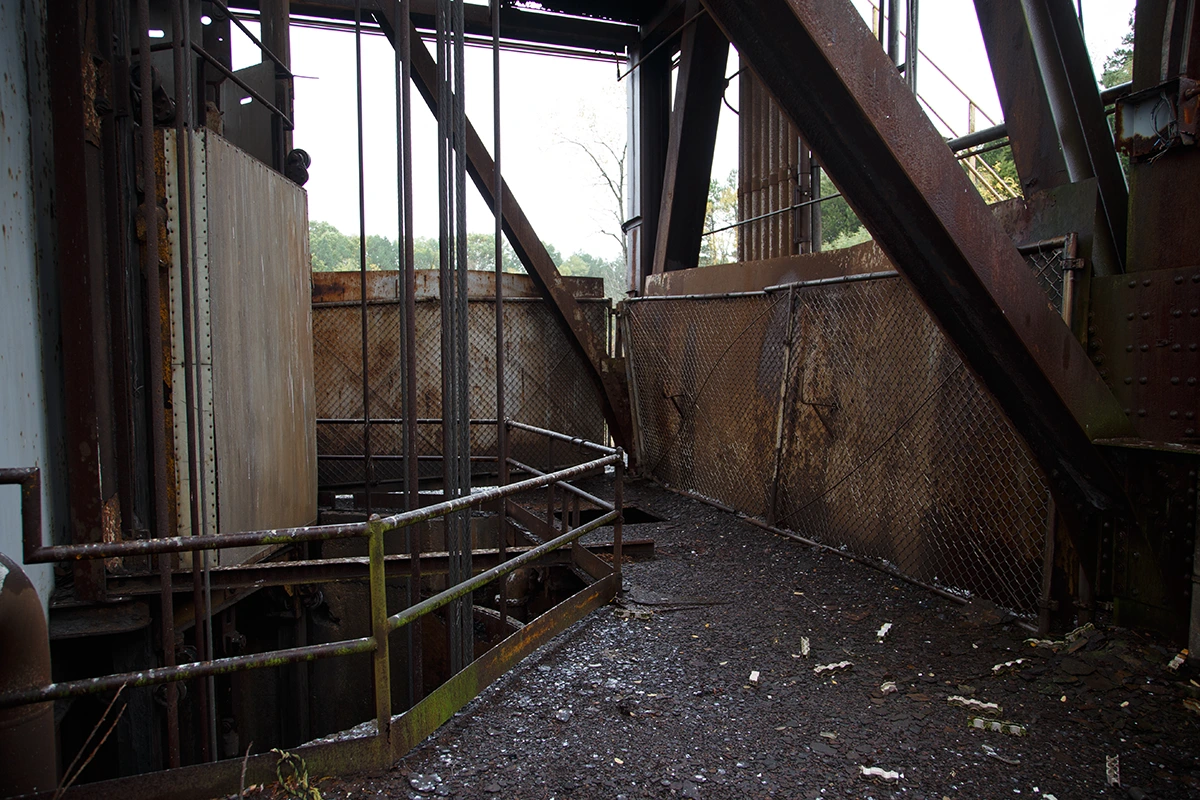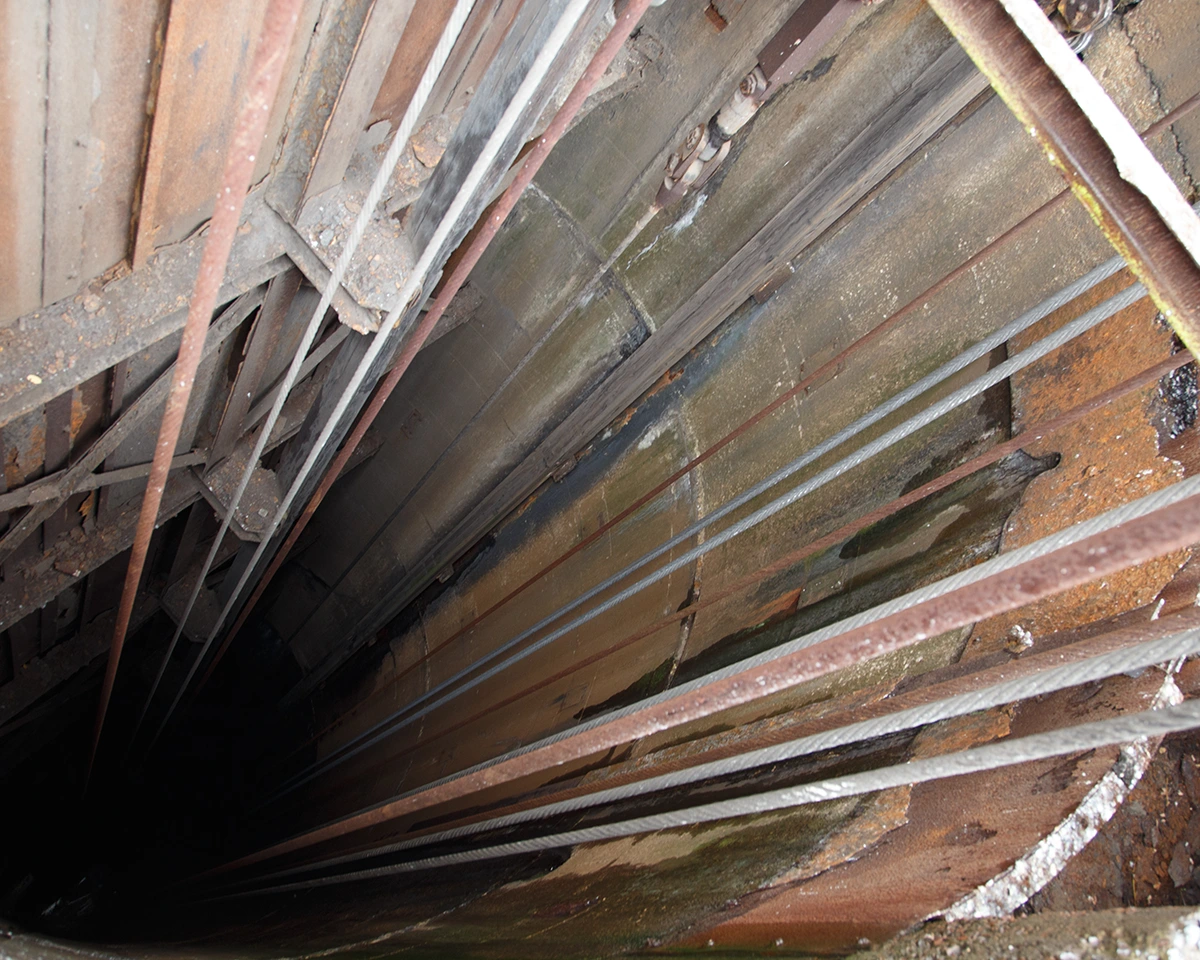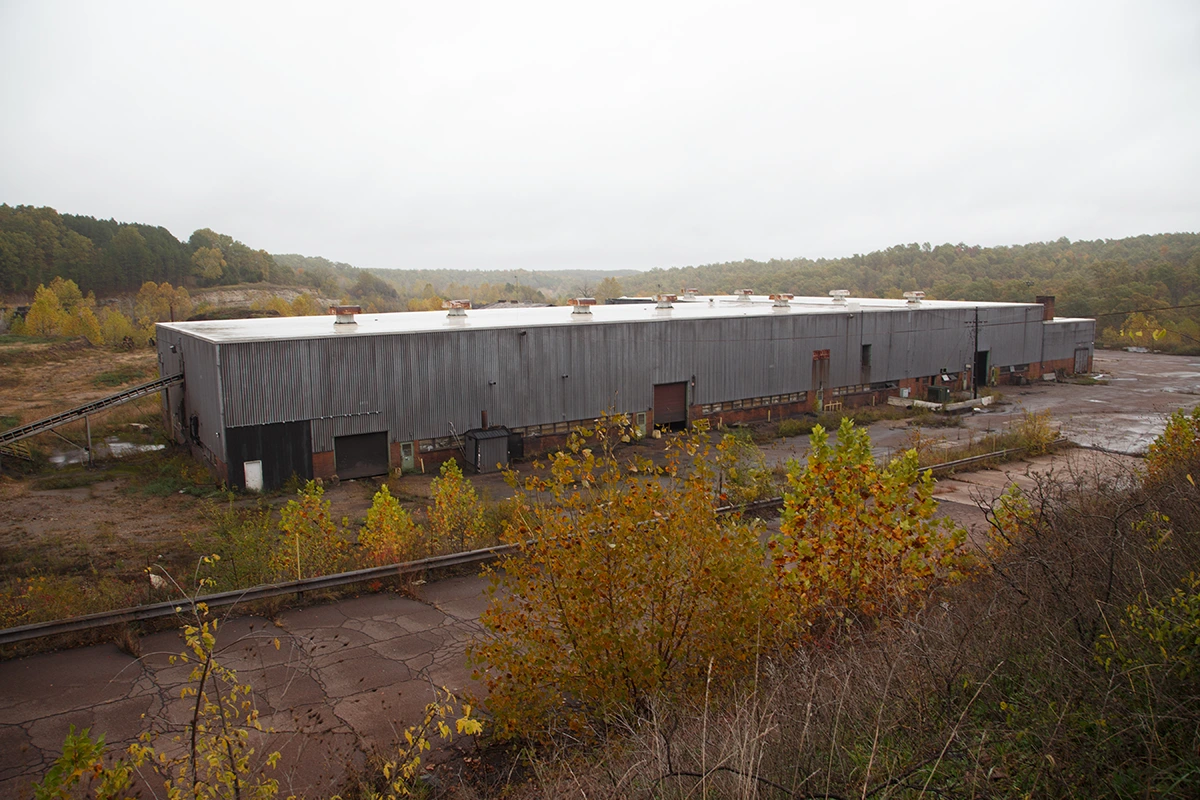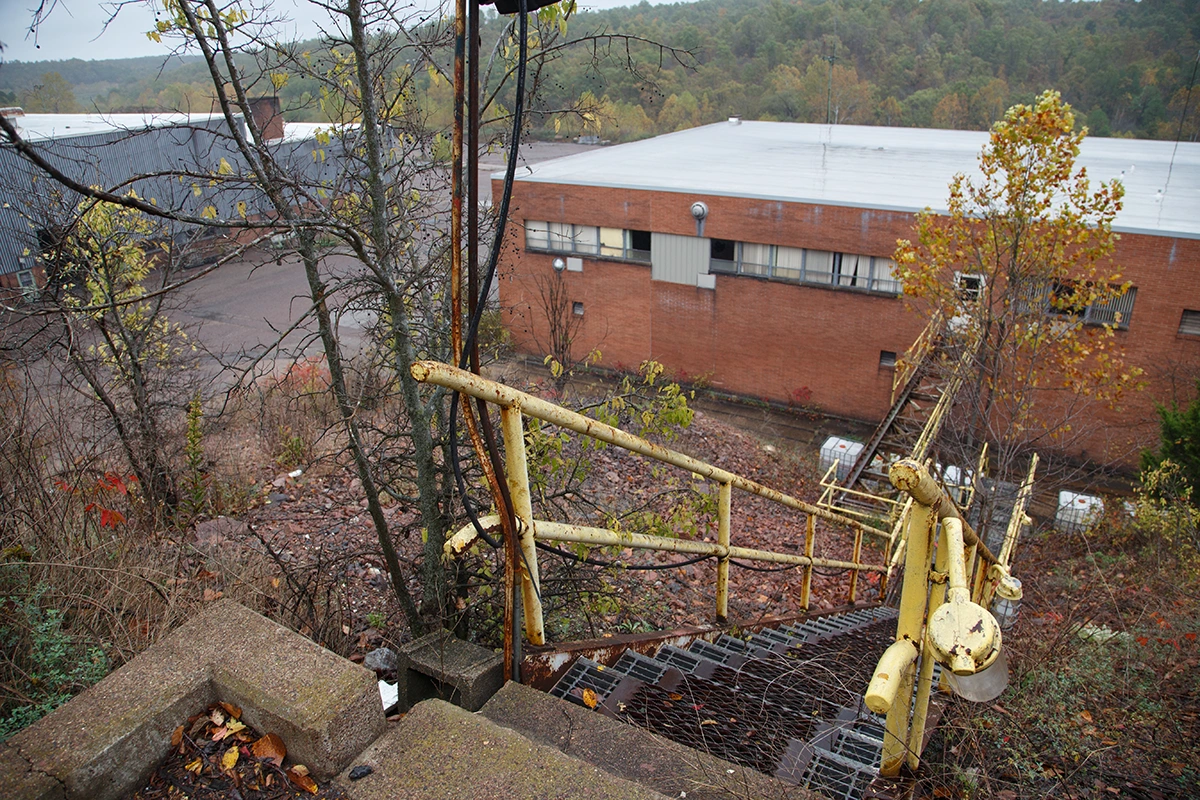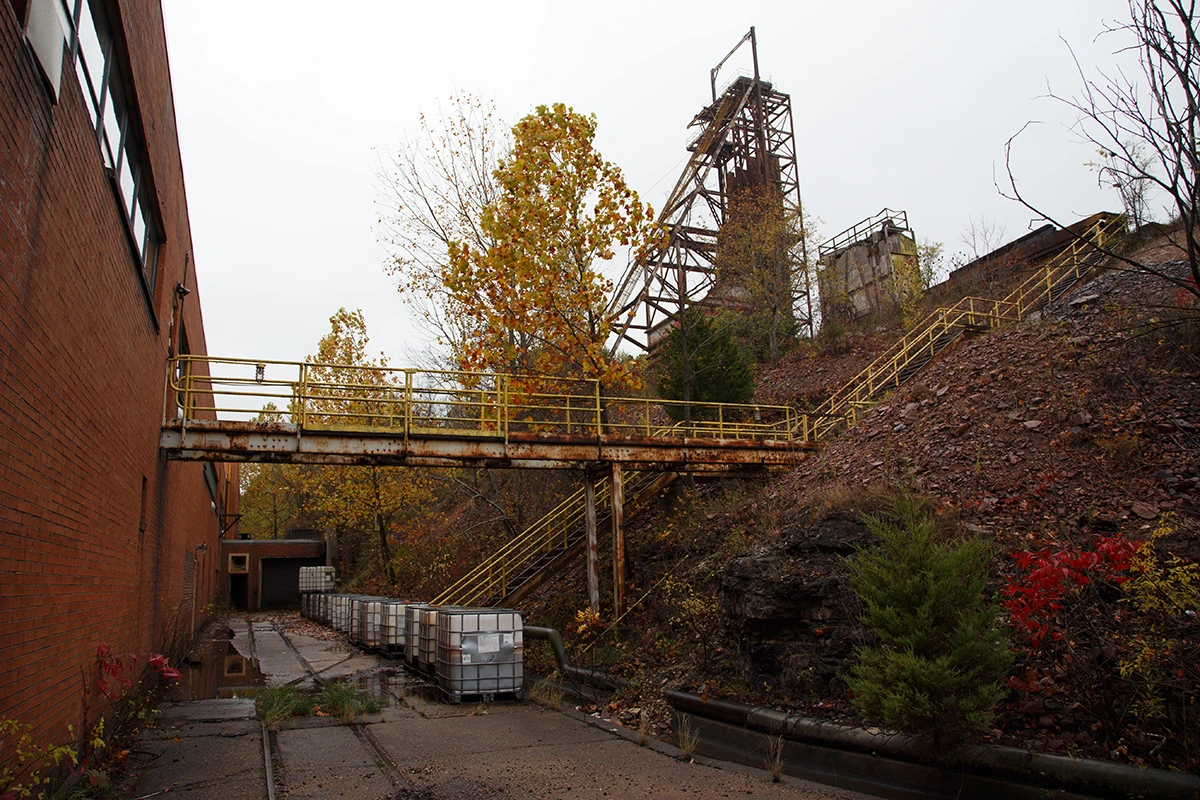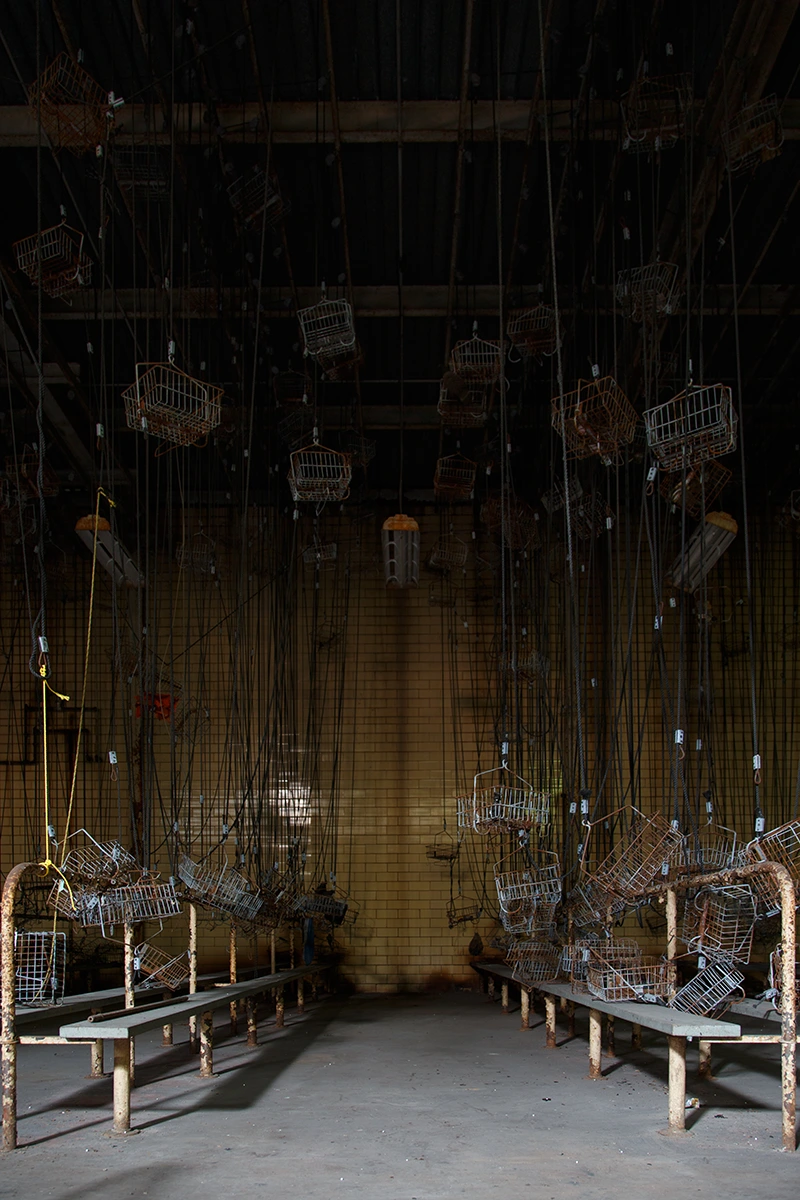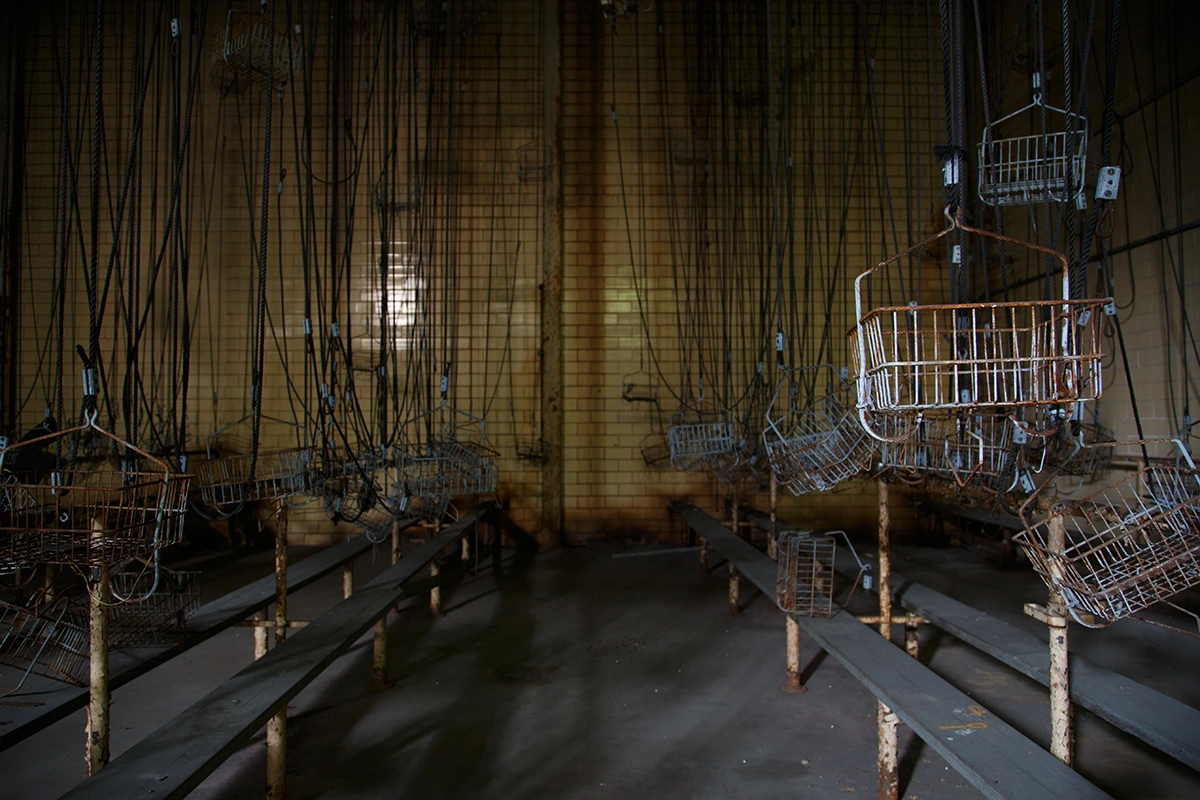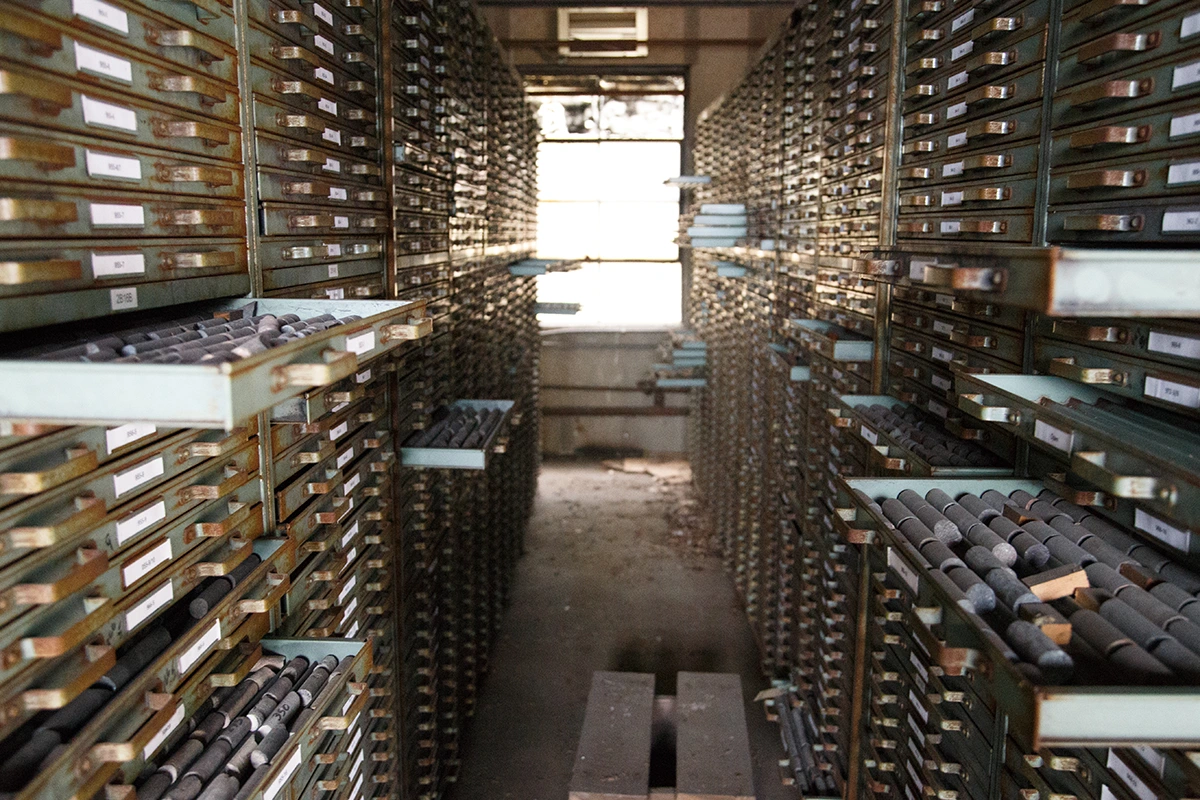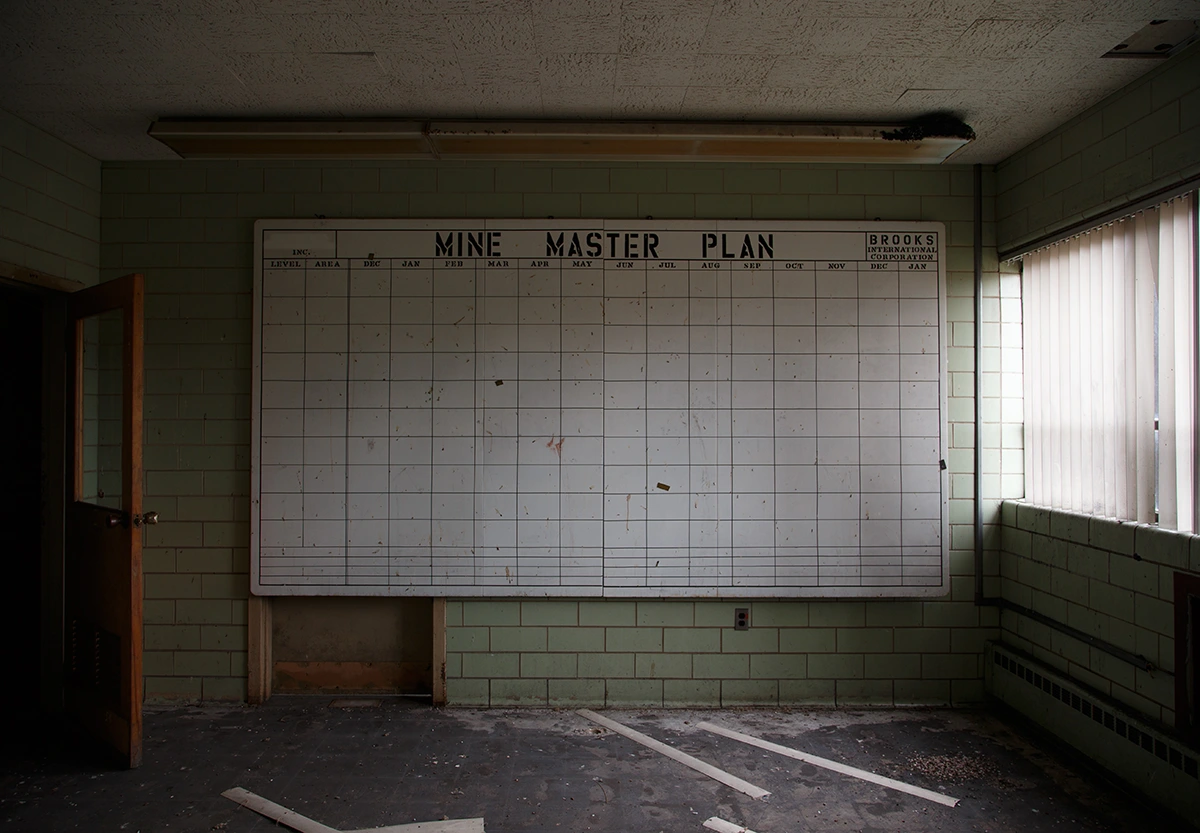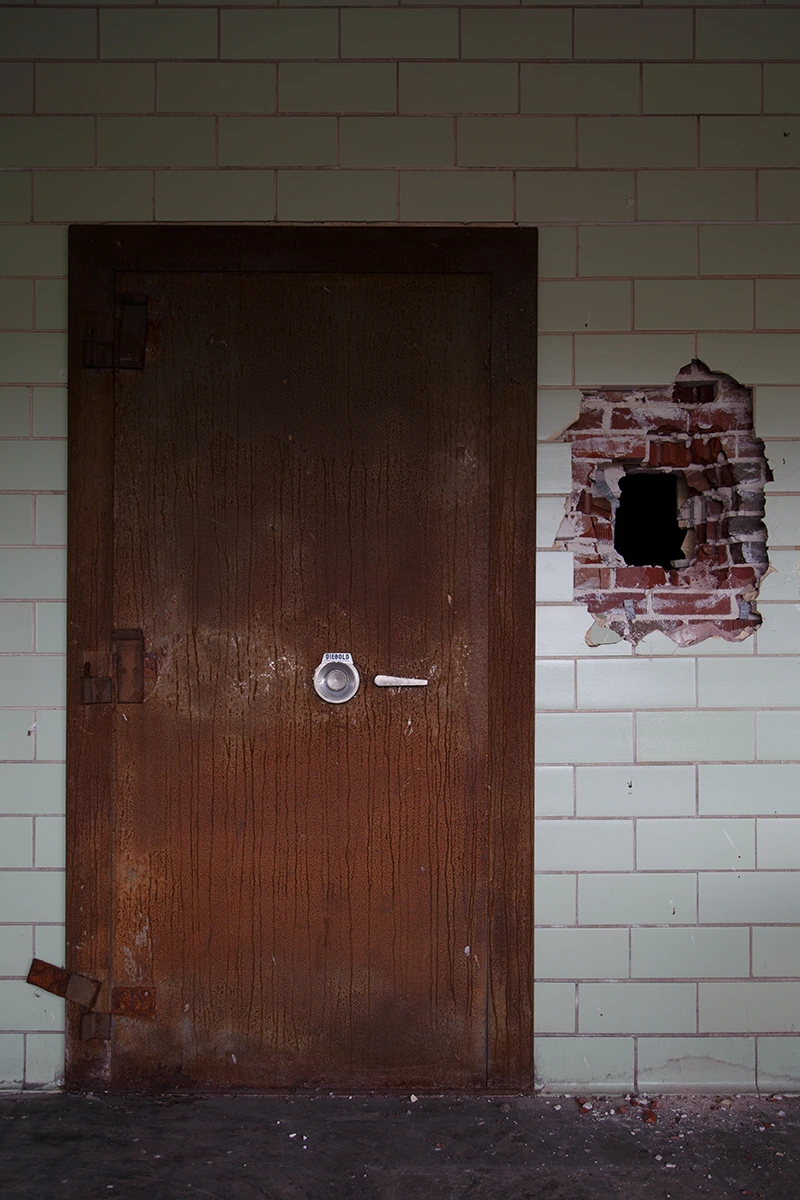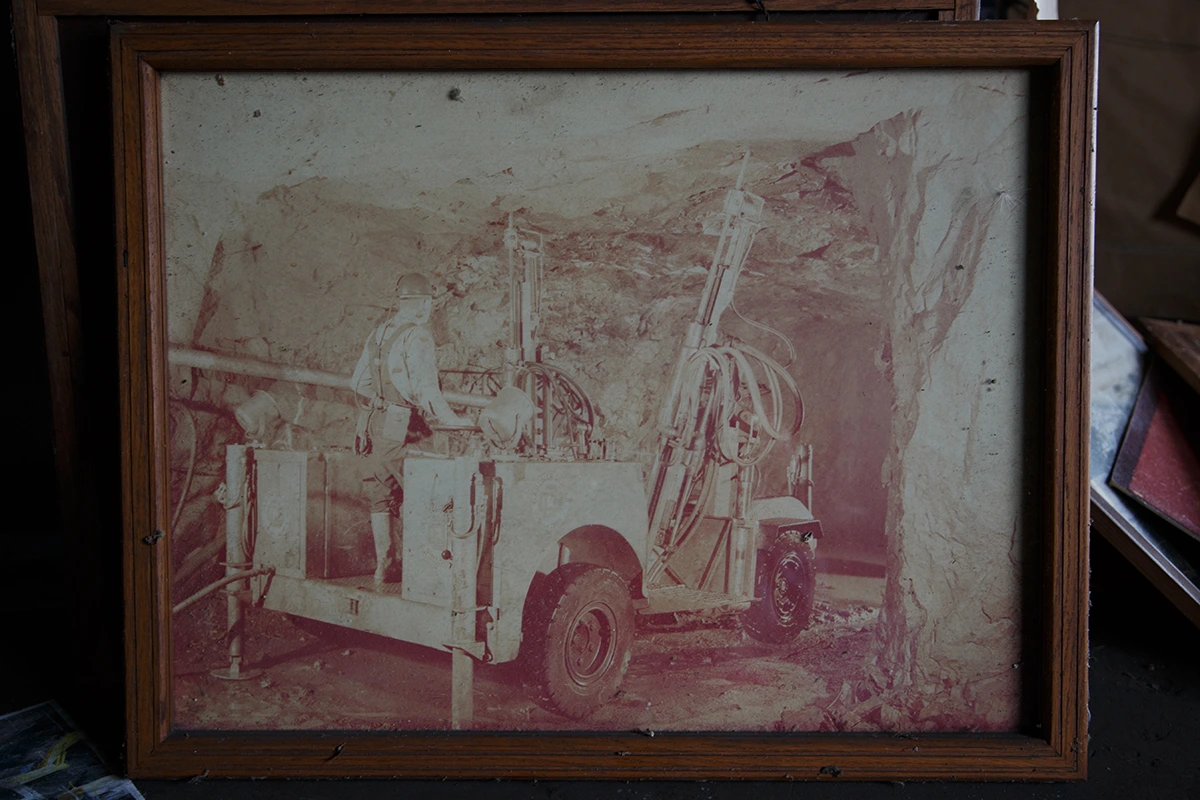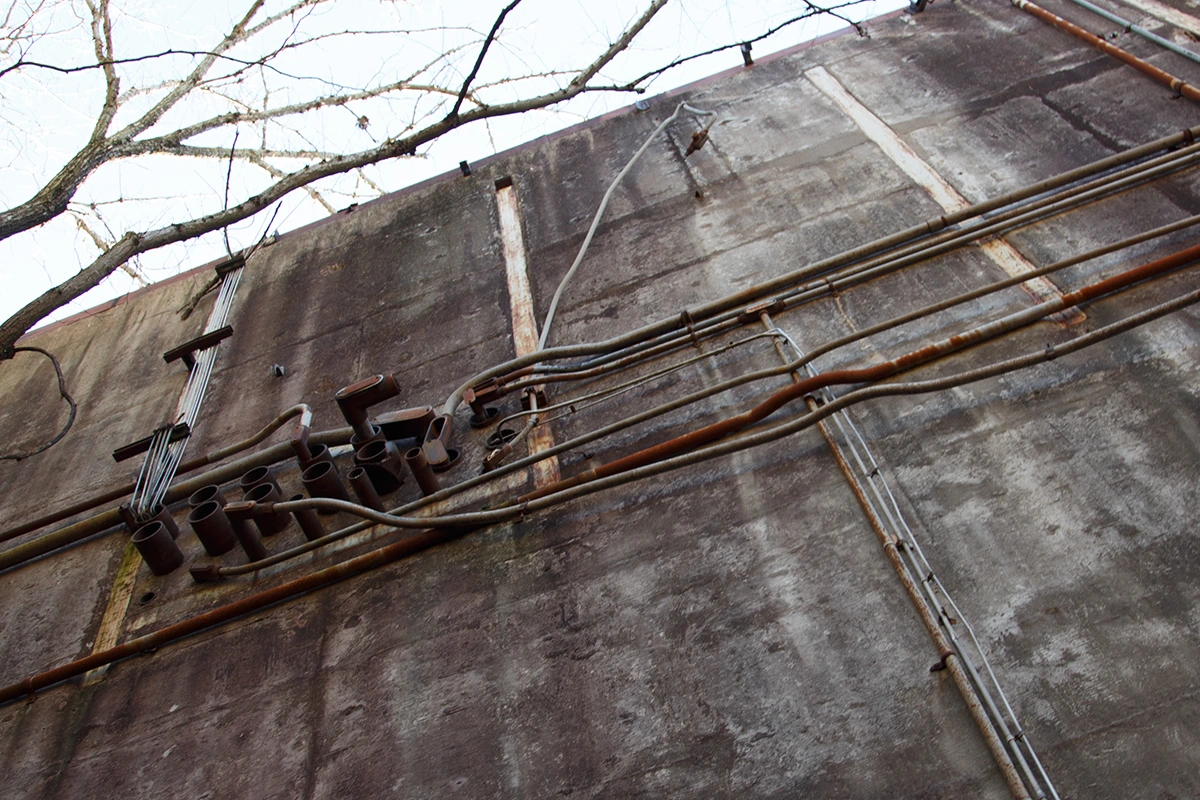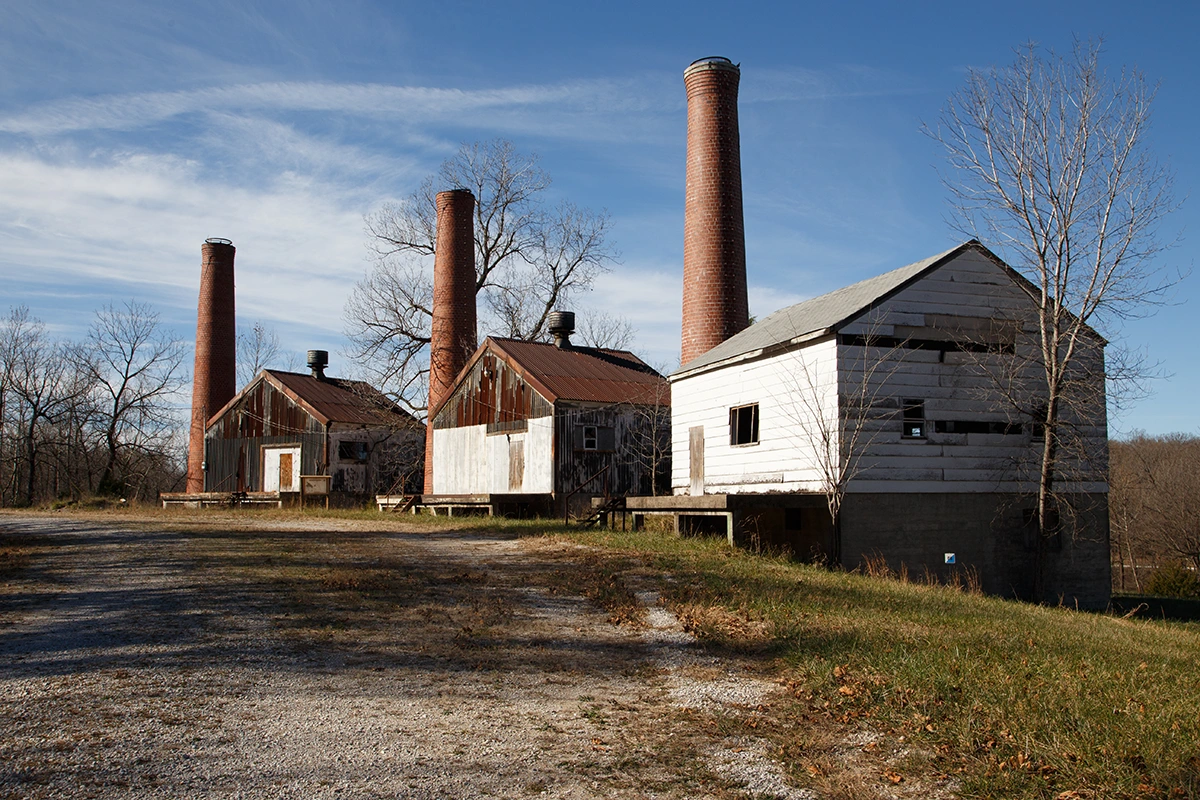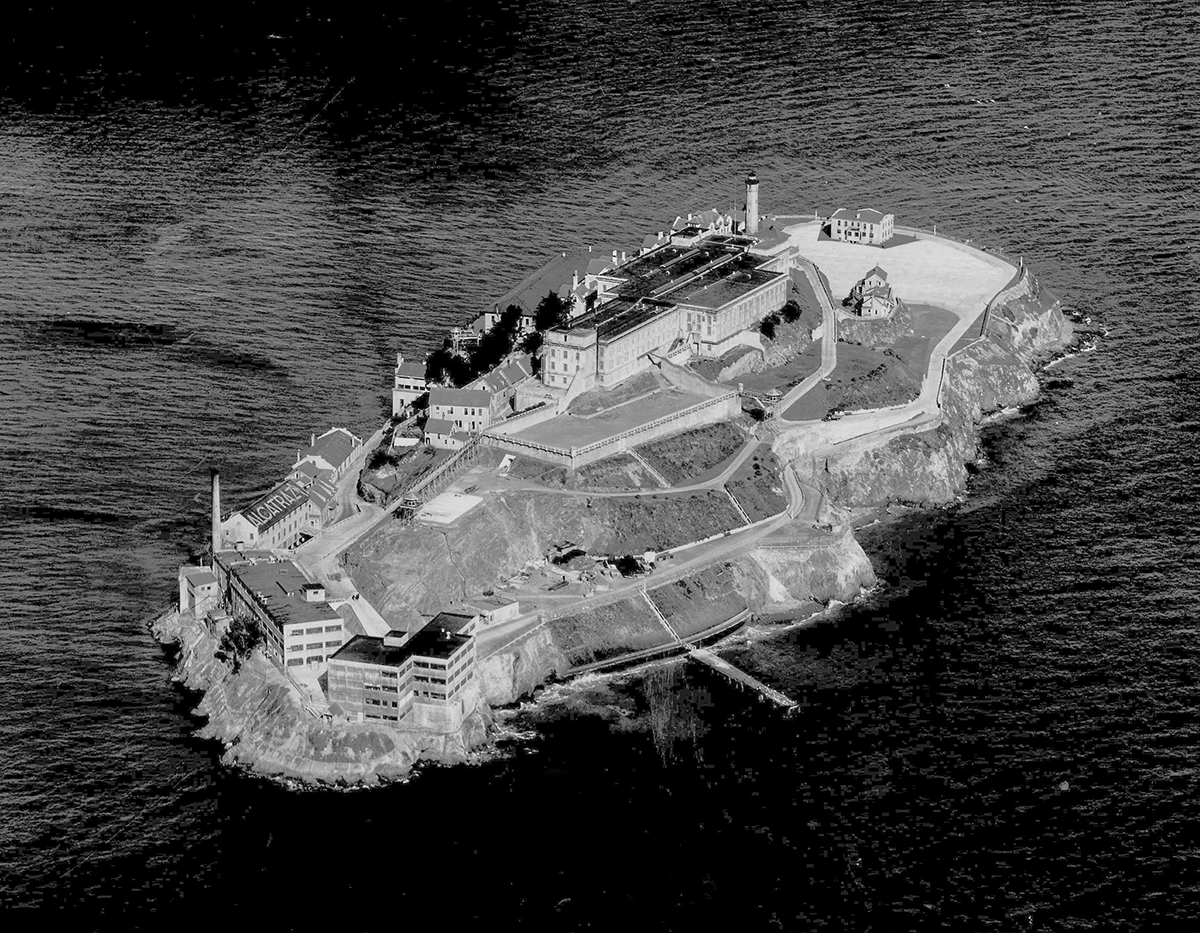Thursday, December 14, 2017
The Iron Mine was constructed in 1964. "During operation, it extracted as much as 1 million ton of rock each year. The iron ore extracted here was crushed to a size less than 1 1/2 ft. in the underground crusher. It was then hoisted to the surface and fed into a secondary crusher that took it to a size less than 6 inches. It then went into a tertiary (3rd) crusher that took it to a size less than 1 inch. After that, it went into the wet milling circuit. The mills ground the ore down to where 90% would pass through a 325 mesh screen (for the primary product). It then went through a flotation circuit to separate the impurities out. There were a few different processes after that to produce different products. Most was sold to Coal companies for use in purifying coal. Some was sold to magnet companies. Some was converted to hematite and sold for other uses".
"The elevator was a 20 ft x 14 ft metal box with a normal operating speed of ~60 ft per sec. going up or down. The tunnels started at 1600 ft. down where the ore body began. Every 50 ft. to 75 ft. after that is another fan of tunnels, with inclines from one level to another. The crusher was located 2400 ft. deep and a half mile long conveyor belt took the crushed material up to the hoist skips at 2000 ft. Each skip was filled to approx. 60 tons and that was hoisted straight up to the surface". These hoists were powered by 1,000HP General Electric Induction motors.
The Iron Mine ceased all operations in the early 2000's due to the price of imported iron being roughly equal the cost of extracting the ore here. The mine naturally filled with water when the pumps were shut off, as they pumped around 1/2 a million gallons out every 24 hours during operation. The mines are now flooded and, based on careful scientific tests performed by my comrades and I on a recent visit, we determined that the water level is about 300 feet down from the surface.
A former employee provided most of the information above regarding day-to-day operations.
Click here for the video.
Labels: abandoned, headframe, industrial, mine, mining
Tuesday, December 12, 2017
The Rocket Factory was constructed in the 1950s and during the short decade in which it was operational, it contributed significantly to the course of world history. In fact, this might be the most historically significant (and highest risk) location I've ever explored. It was decommissioned in the late 1960s. Of the remaining buildings, the steel frame structures were used for testing the fuel delivery systems and gathering data. The resultant data was sent back to a reinforced bunker through a short tunnel which connected the buildings. Inside the bunkers, the data was collected and analyzed. In the case of the main control bunker, there are two longer tunnels about 100 yards in length, which connect to two separate large test pads for the rockets. The tunnels themselves are featureless rectangular concrete tubes and one is a dead end, the other lets out at the base of one of the pads. Unfortunately, the control bunker has been completely gutted and drywall has replaced the wall of monitors and other electronics which once decorated the space properly. When you consider the fact that this site was decommissioned 50 years ago and that there's still any salvageable material left, we are fortunate to have found anything left here at all.
Click here for the video.
Historic Photos of The Rocket Factory
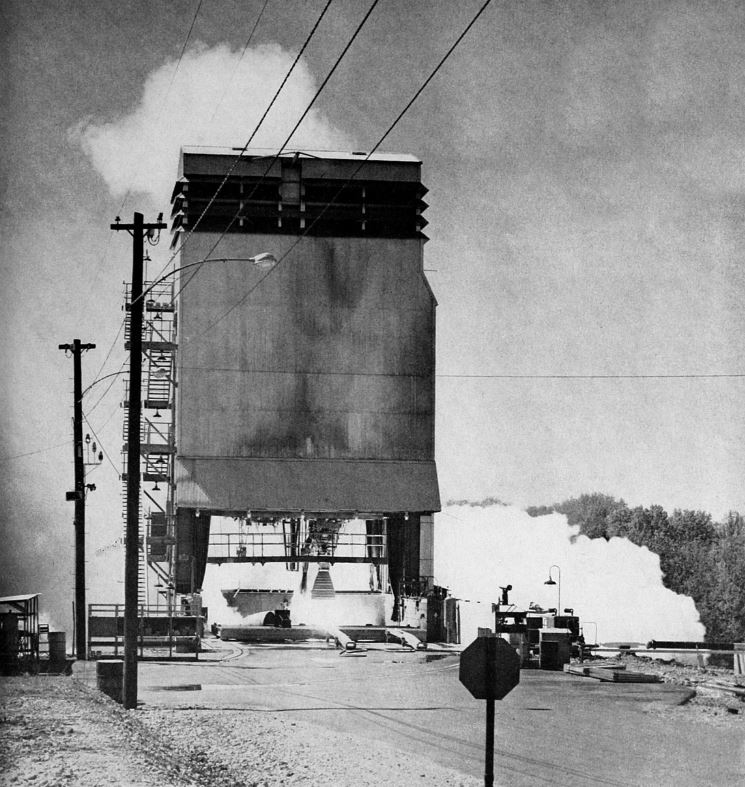
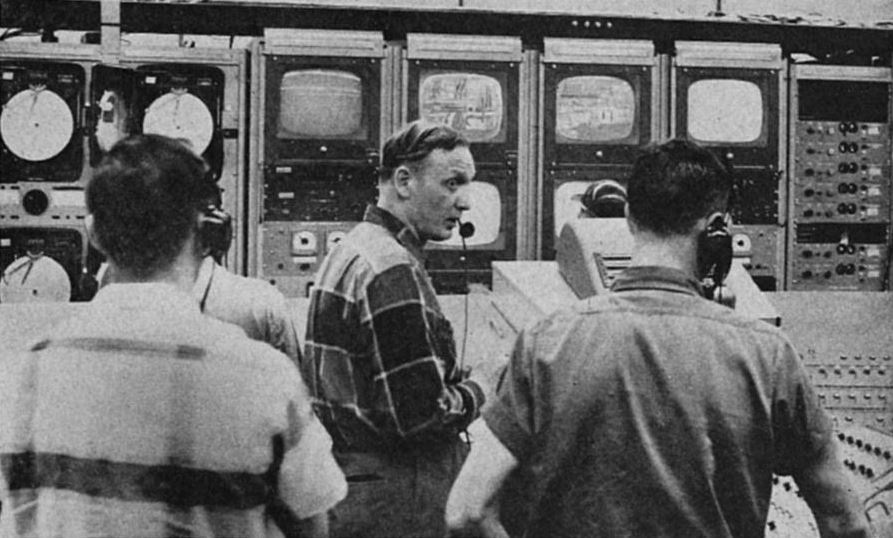

End Historic Photos
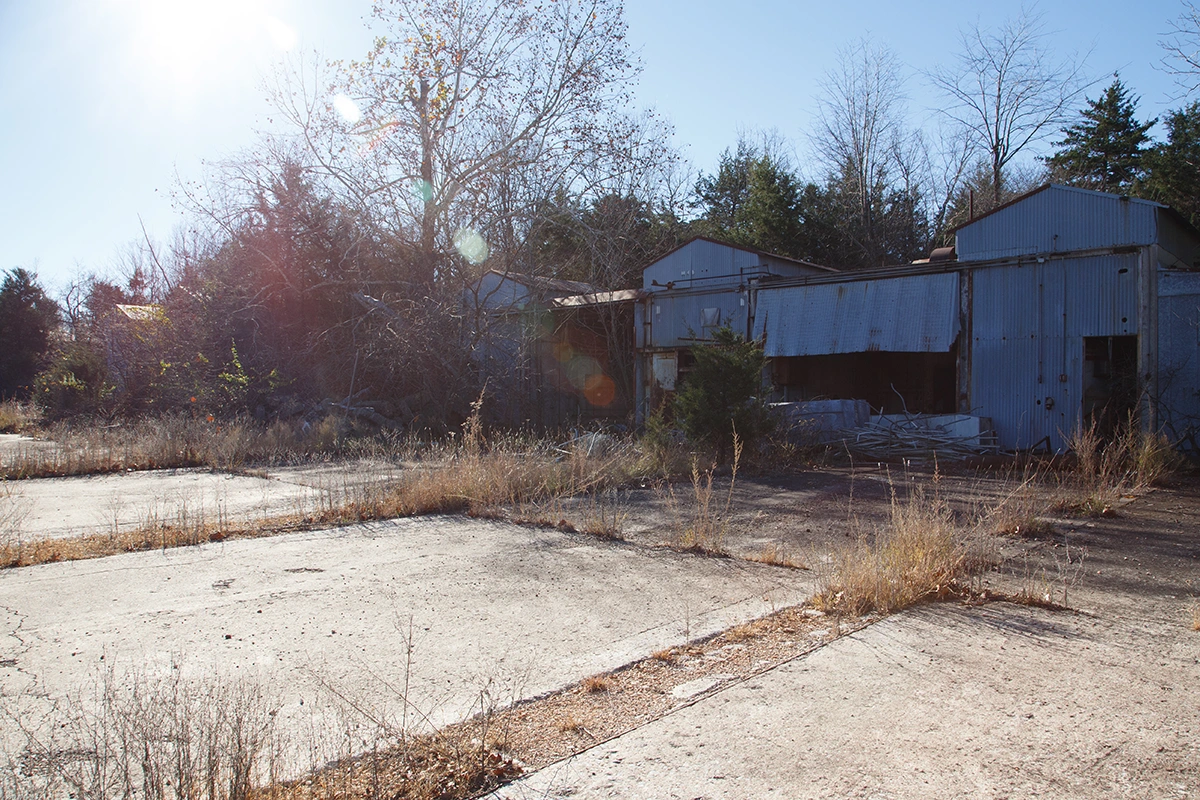
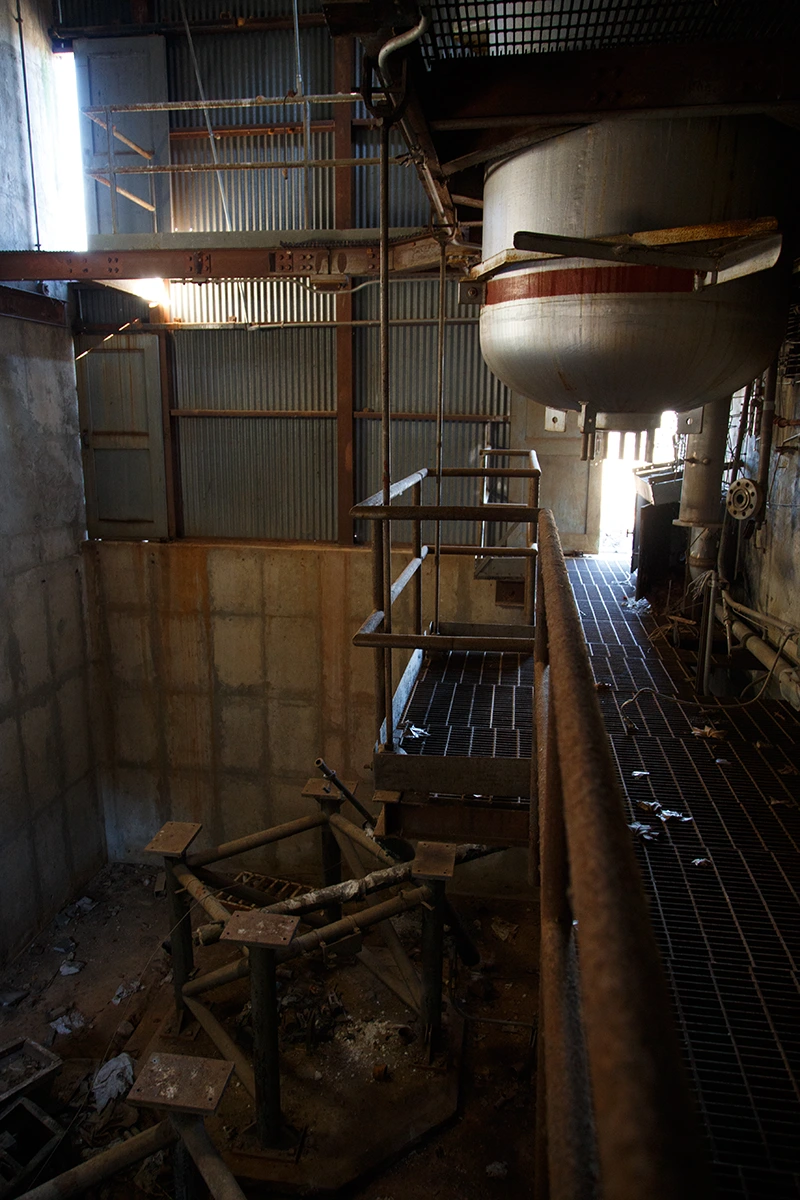
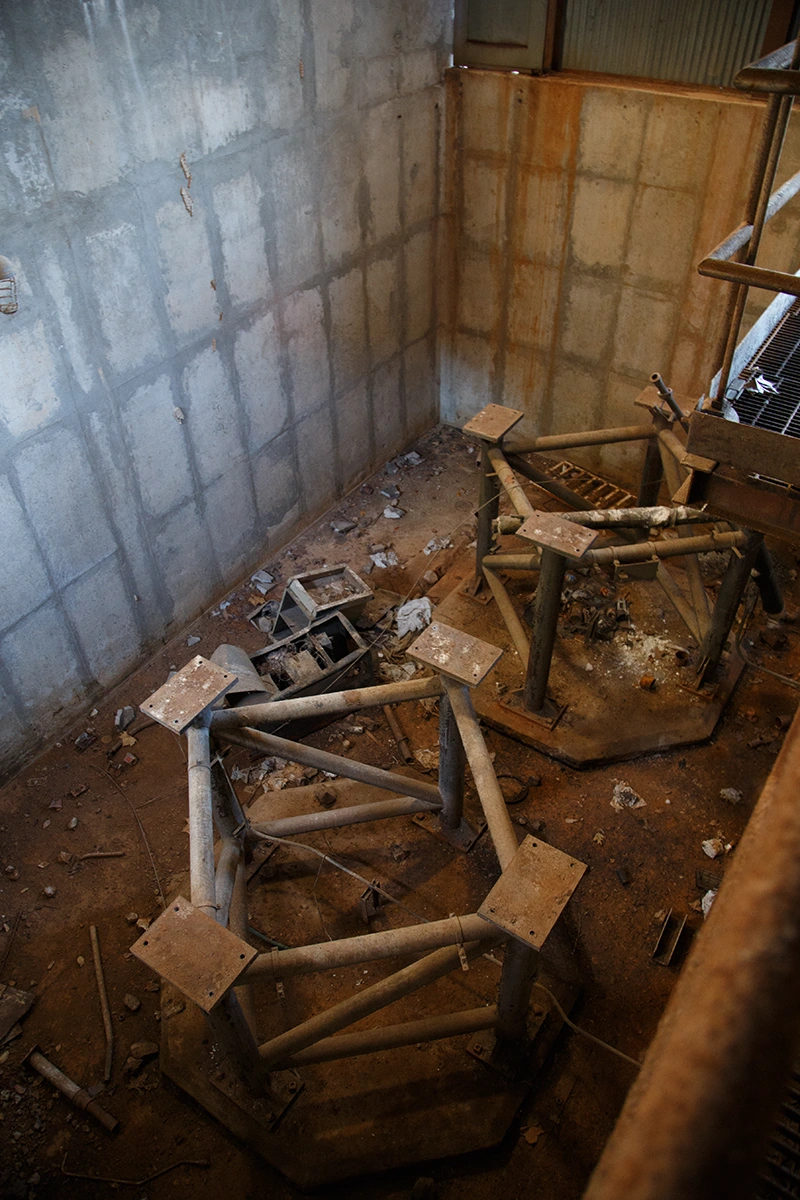
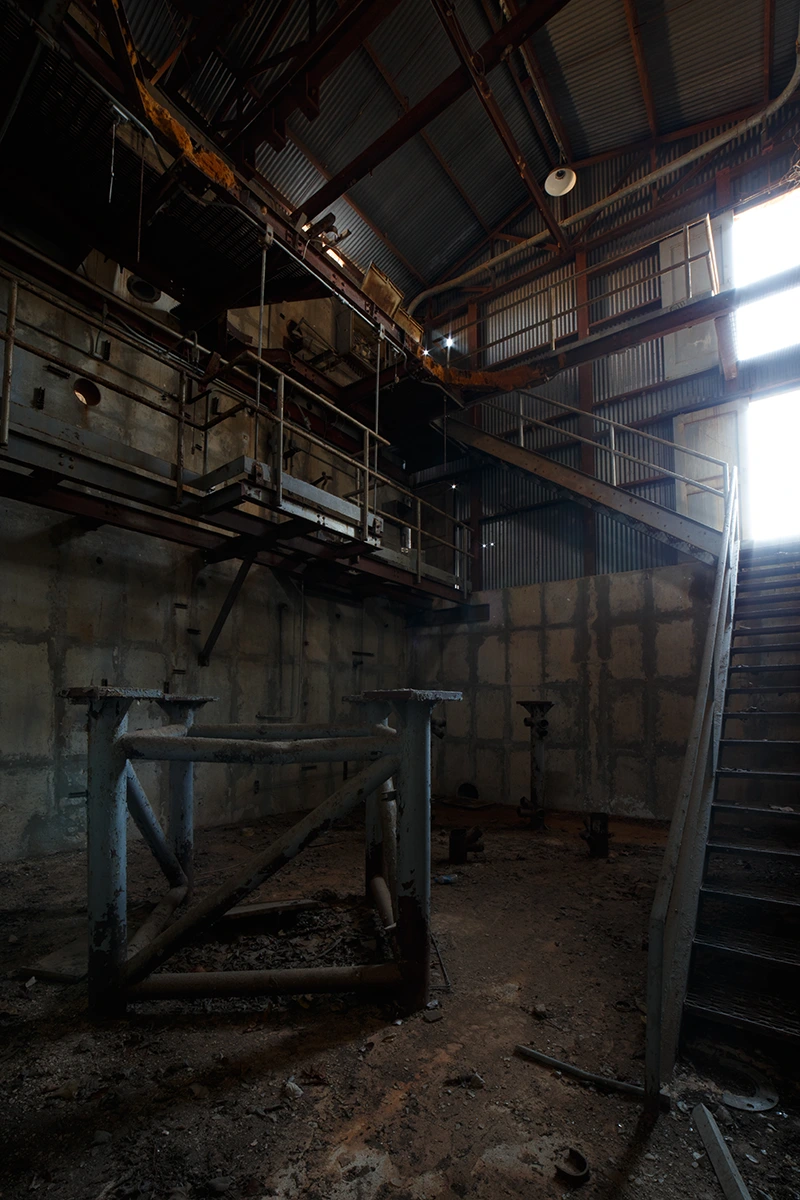
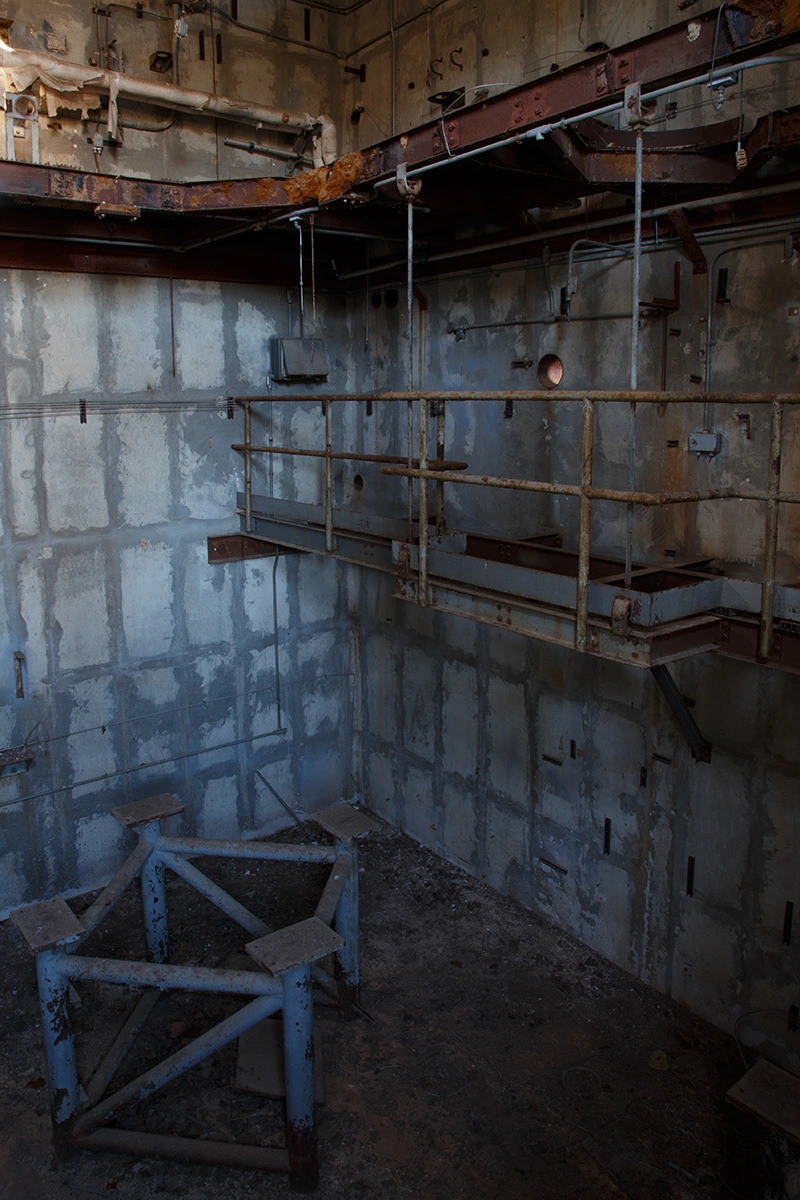
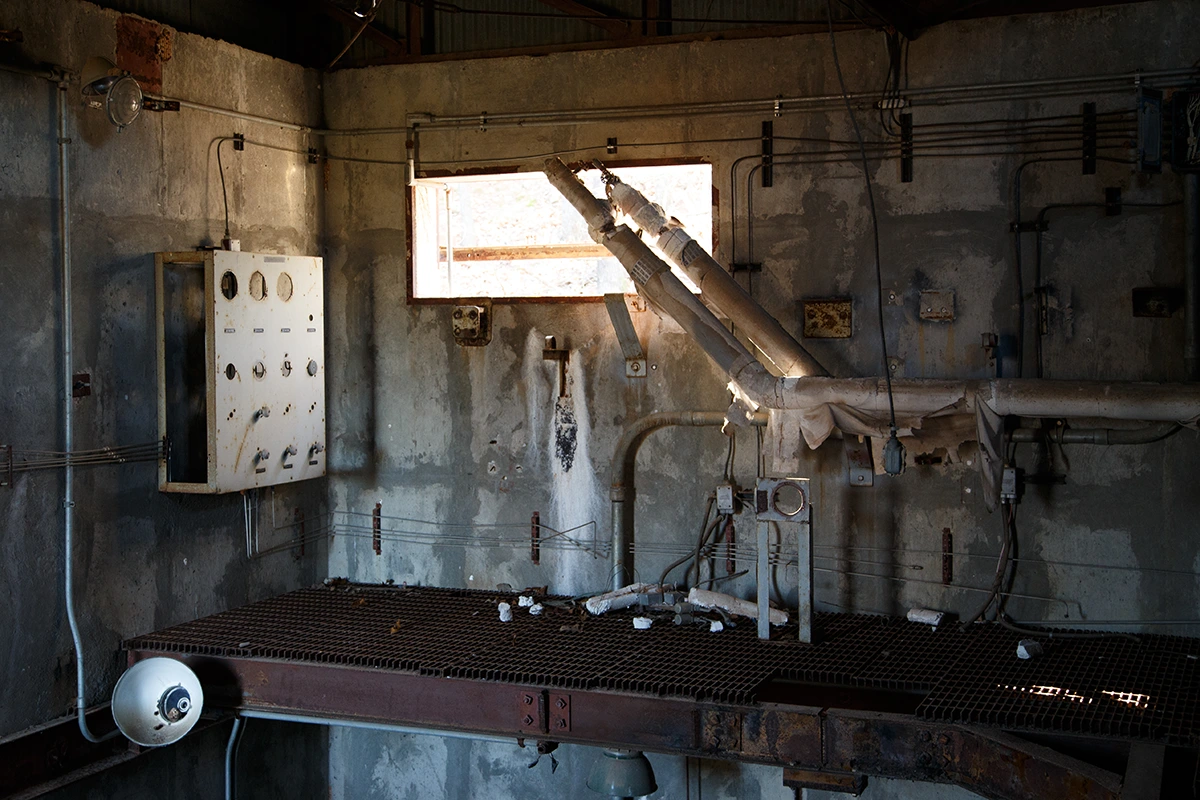
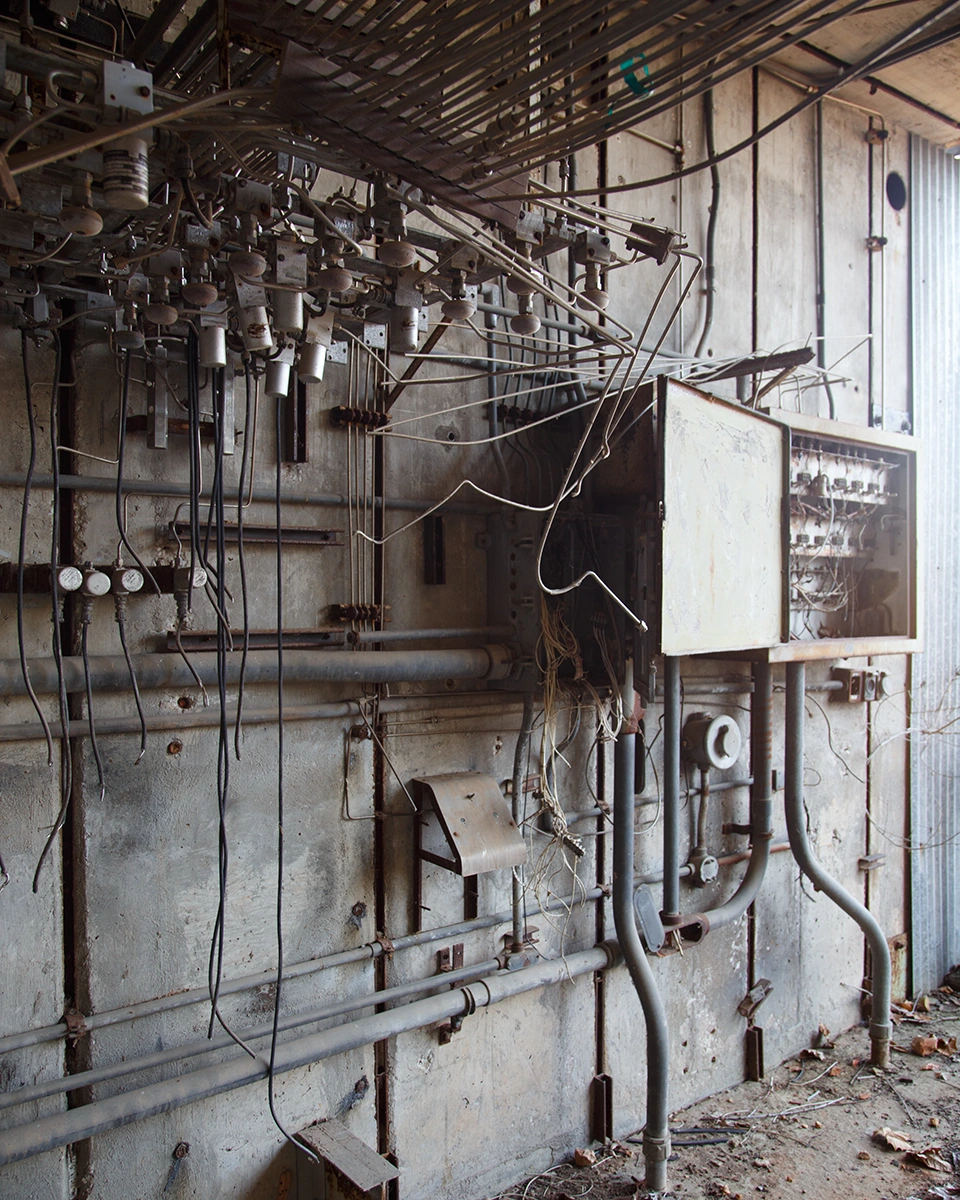
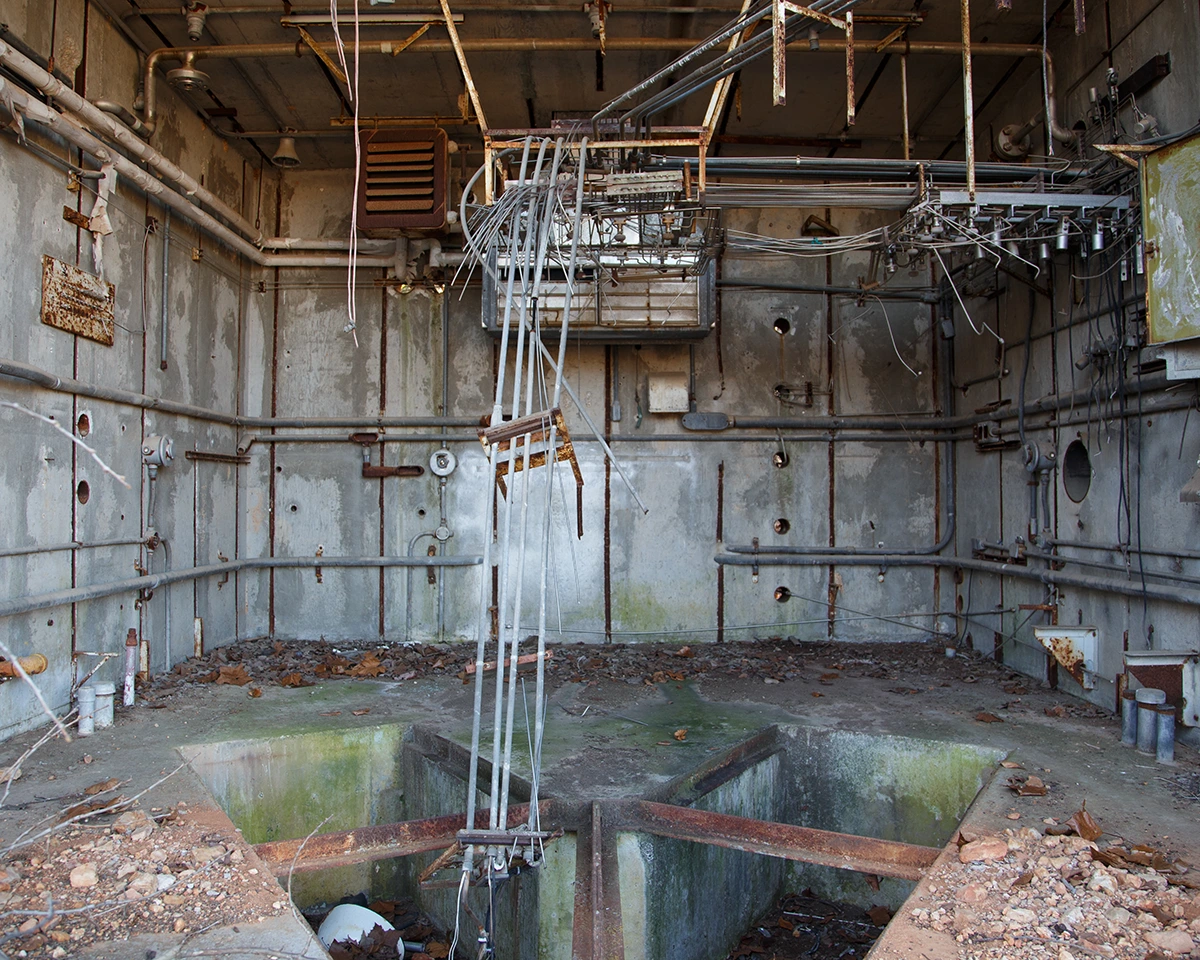
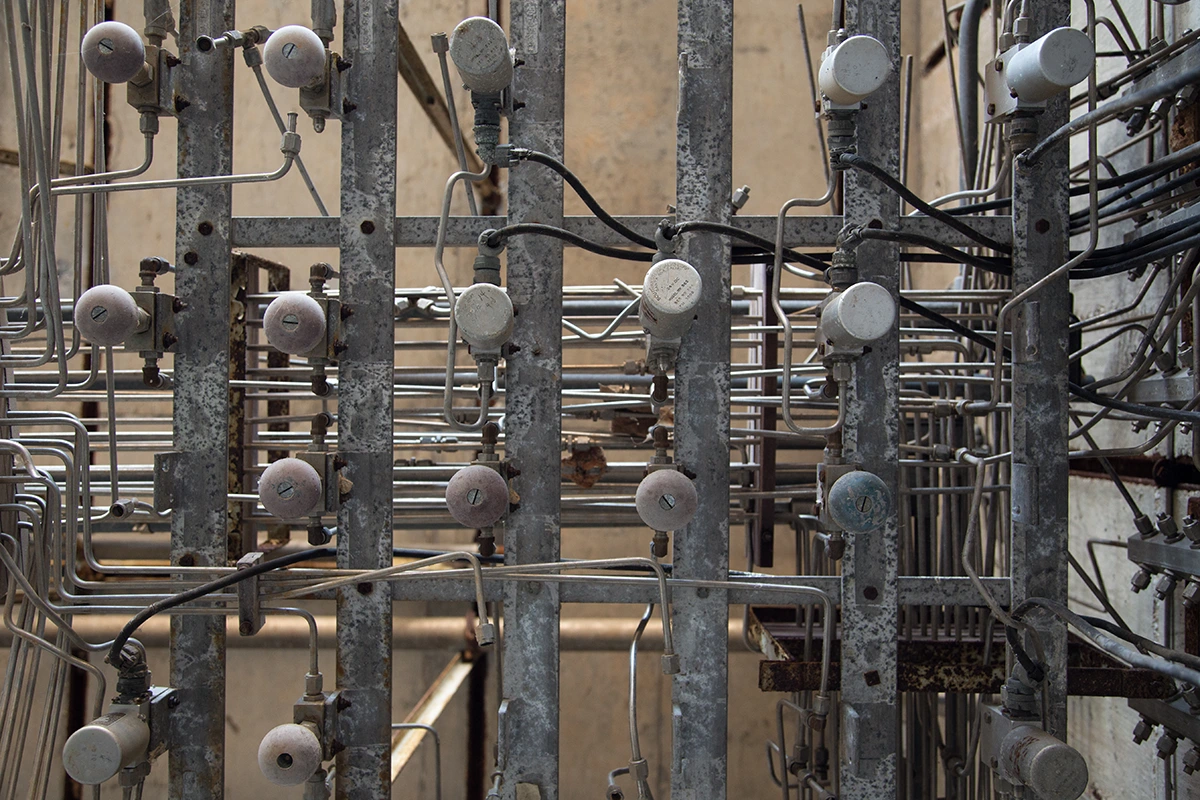
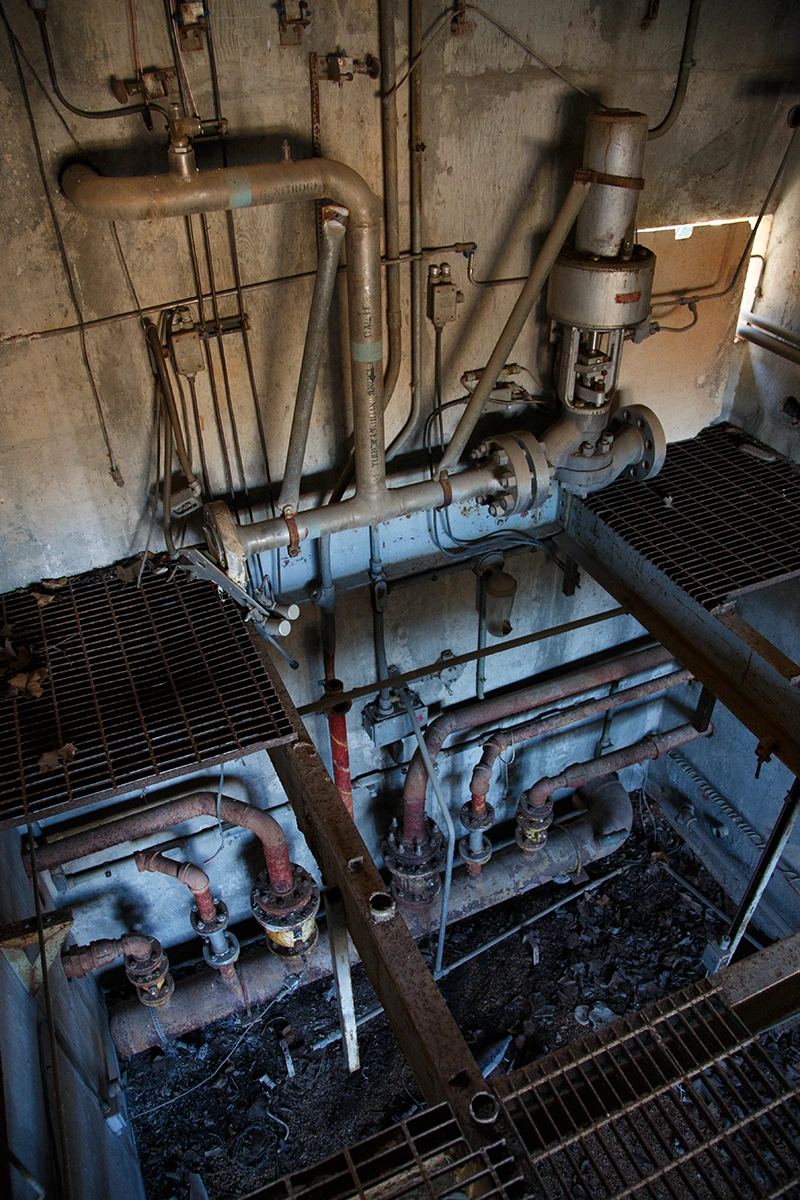
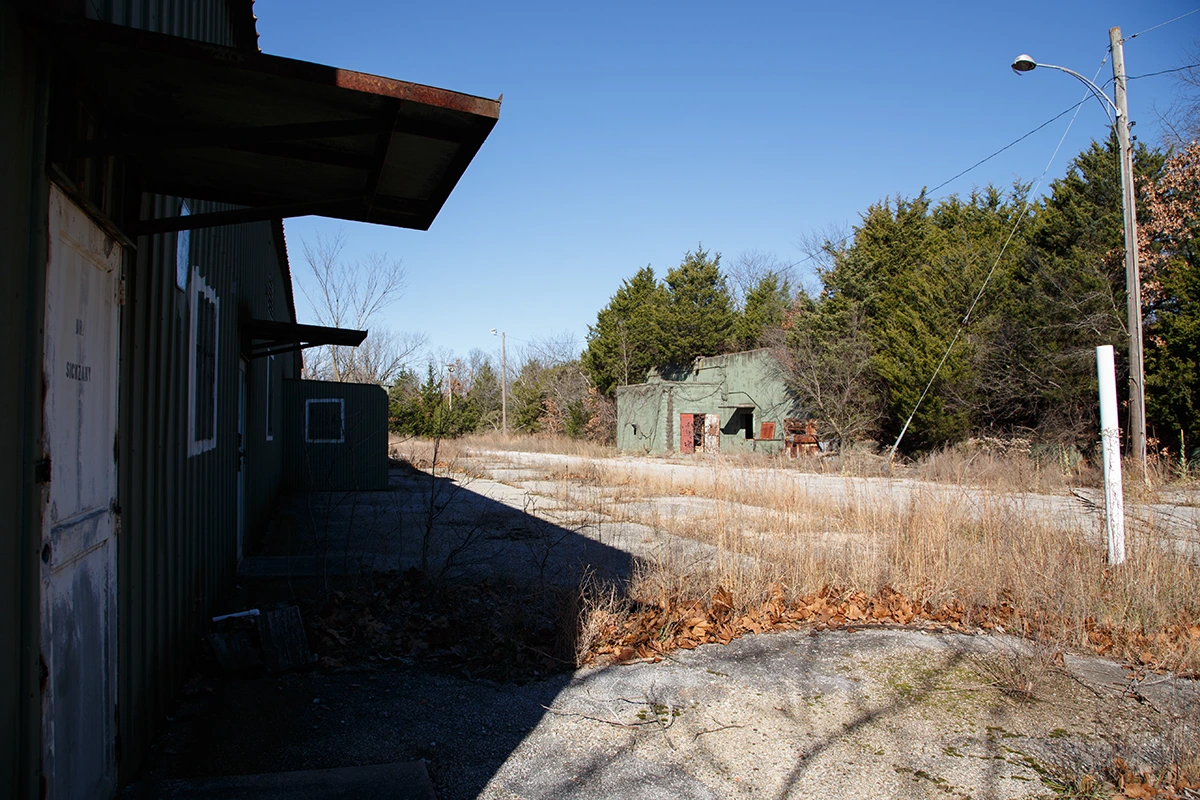
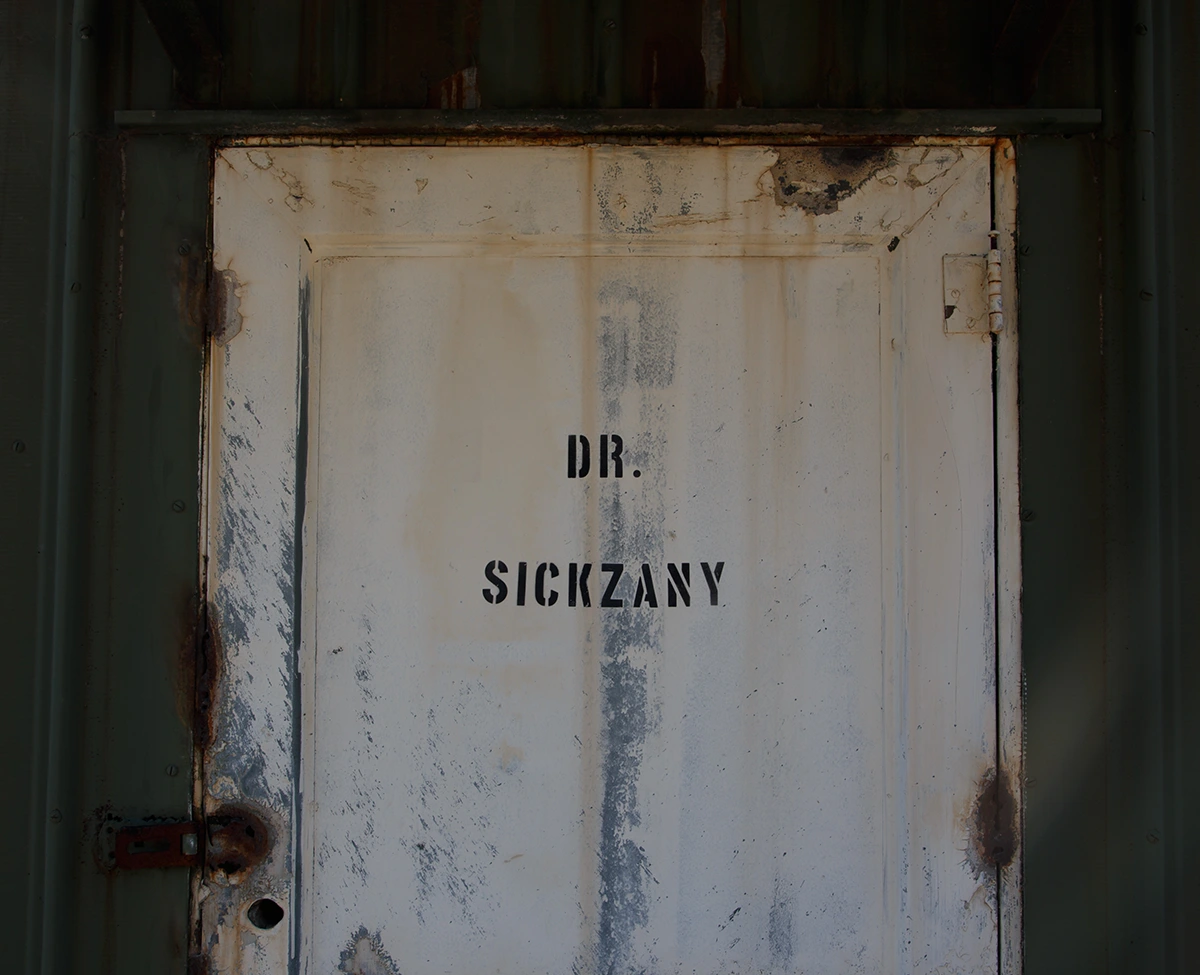
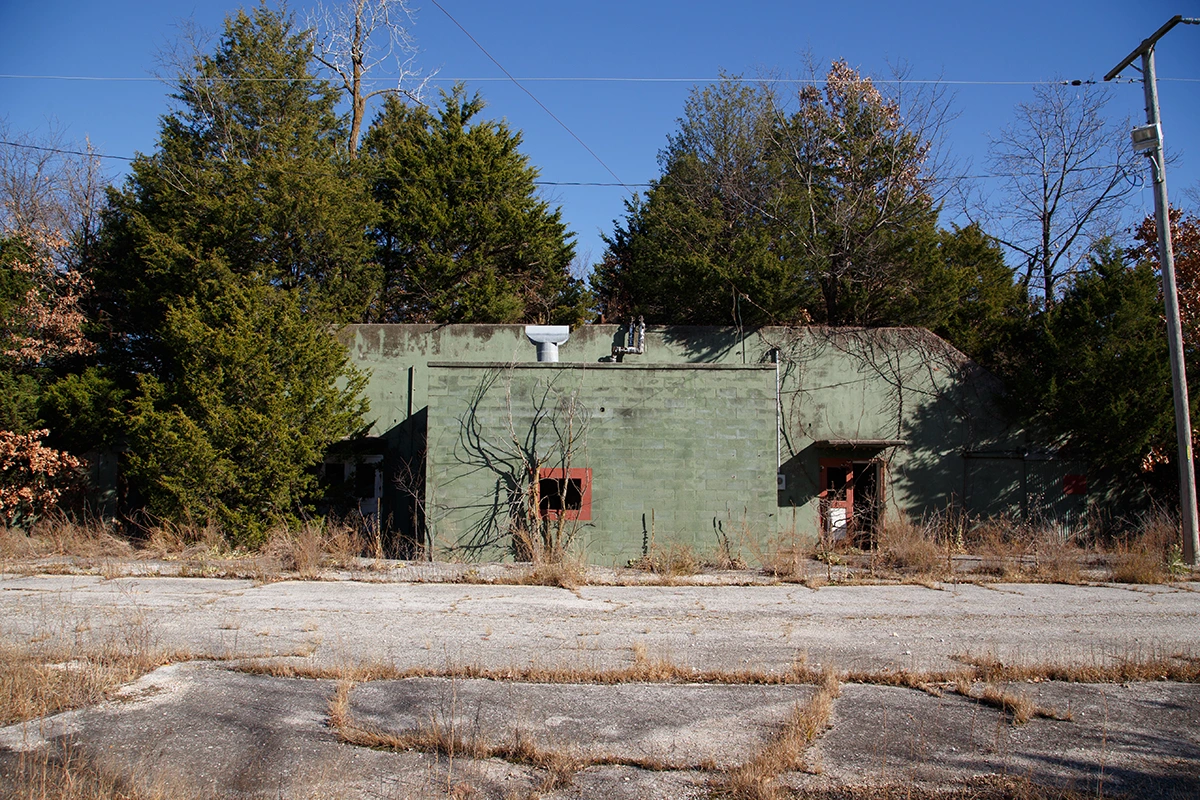

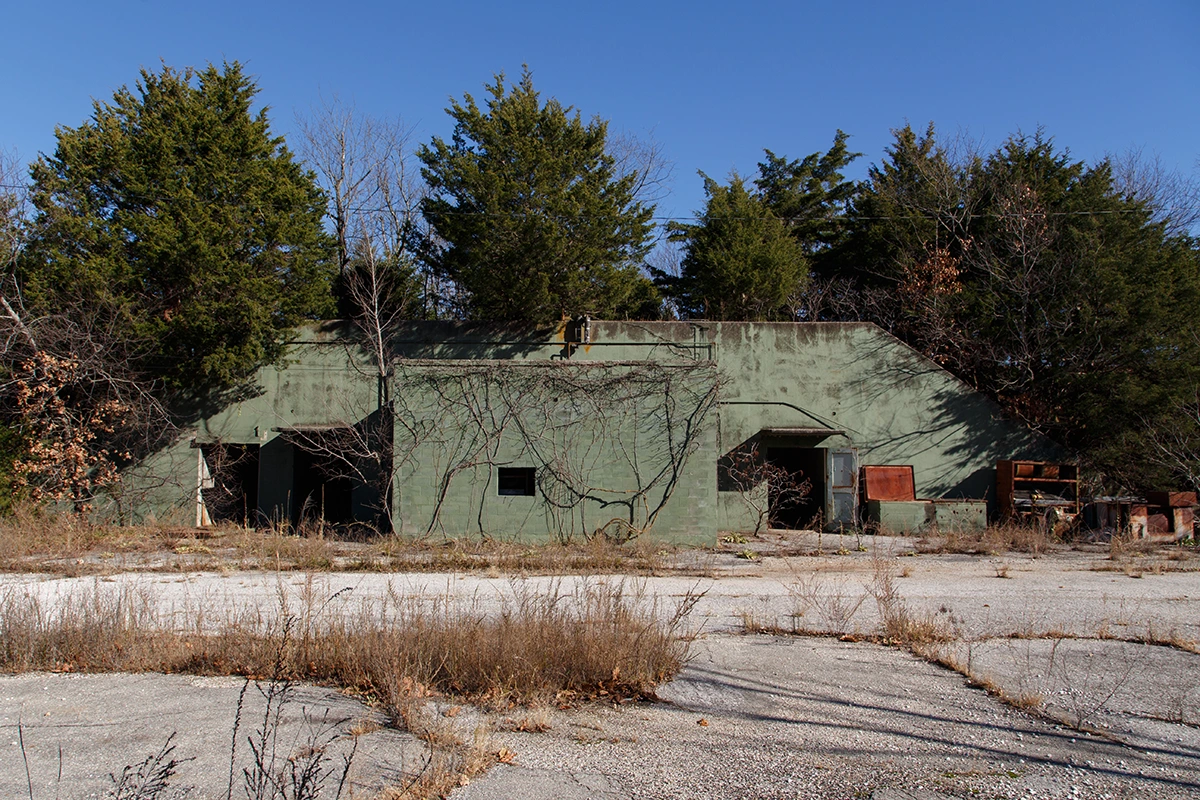
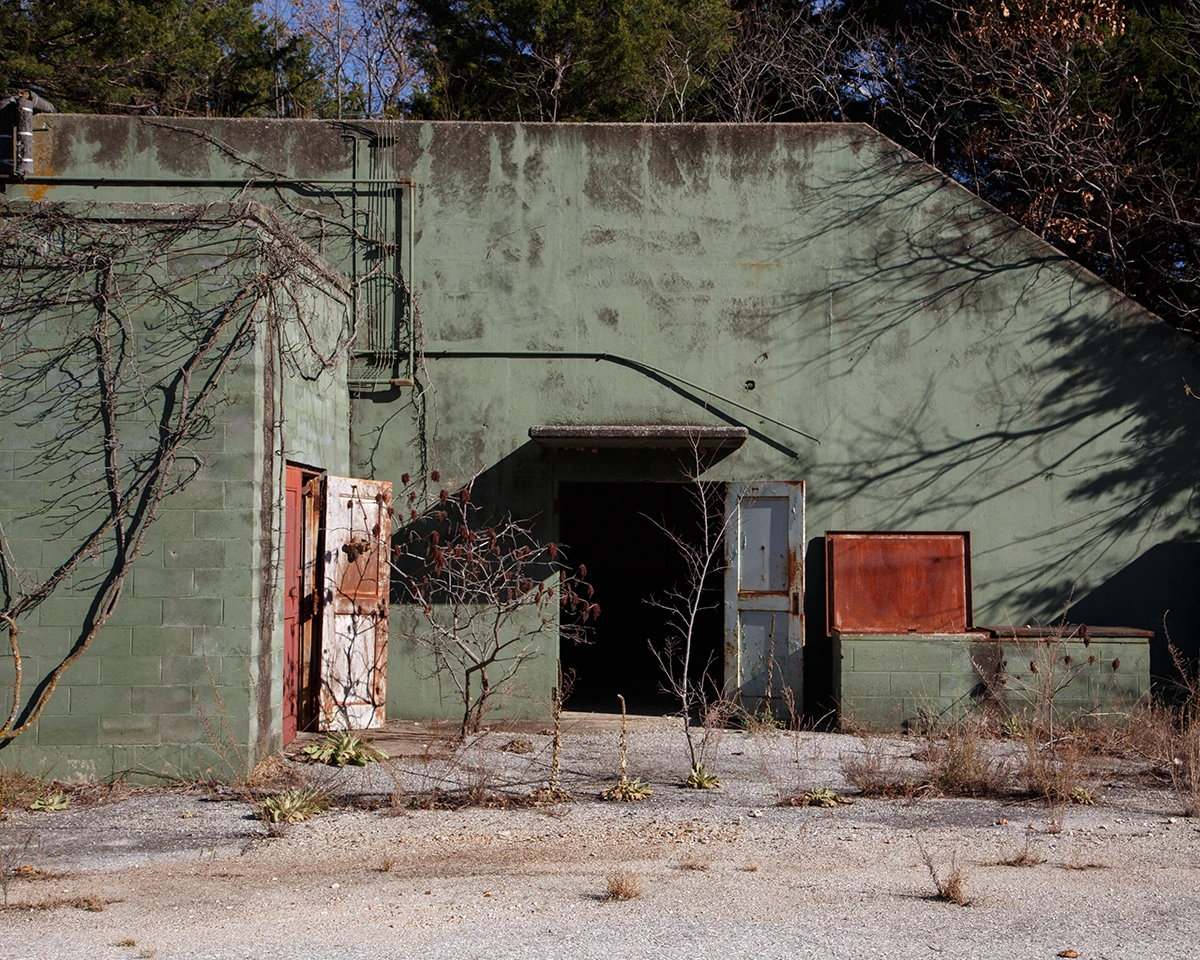
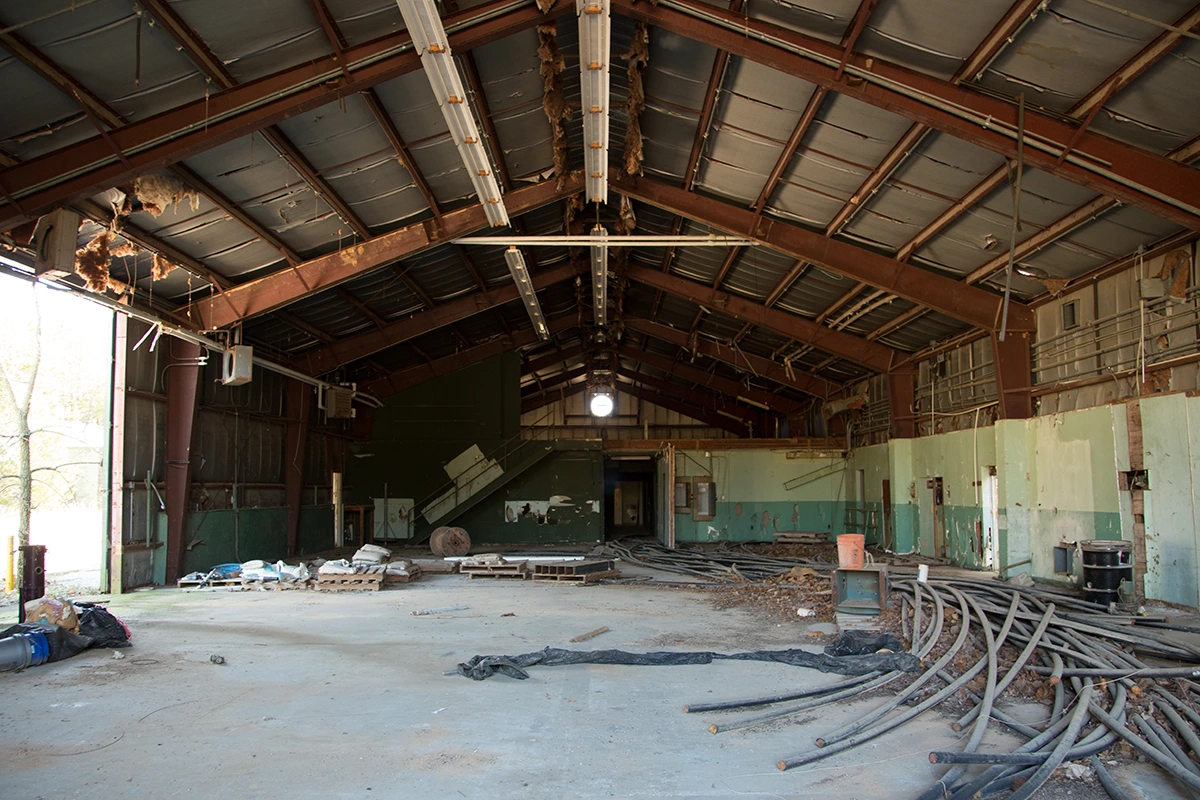
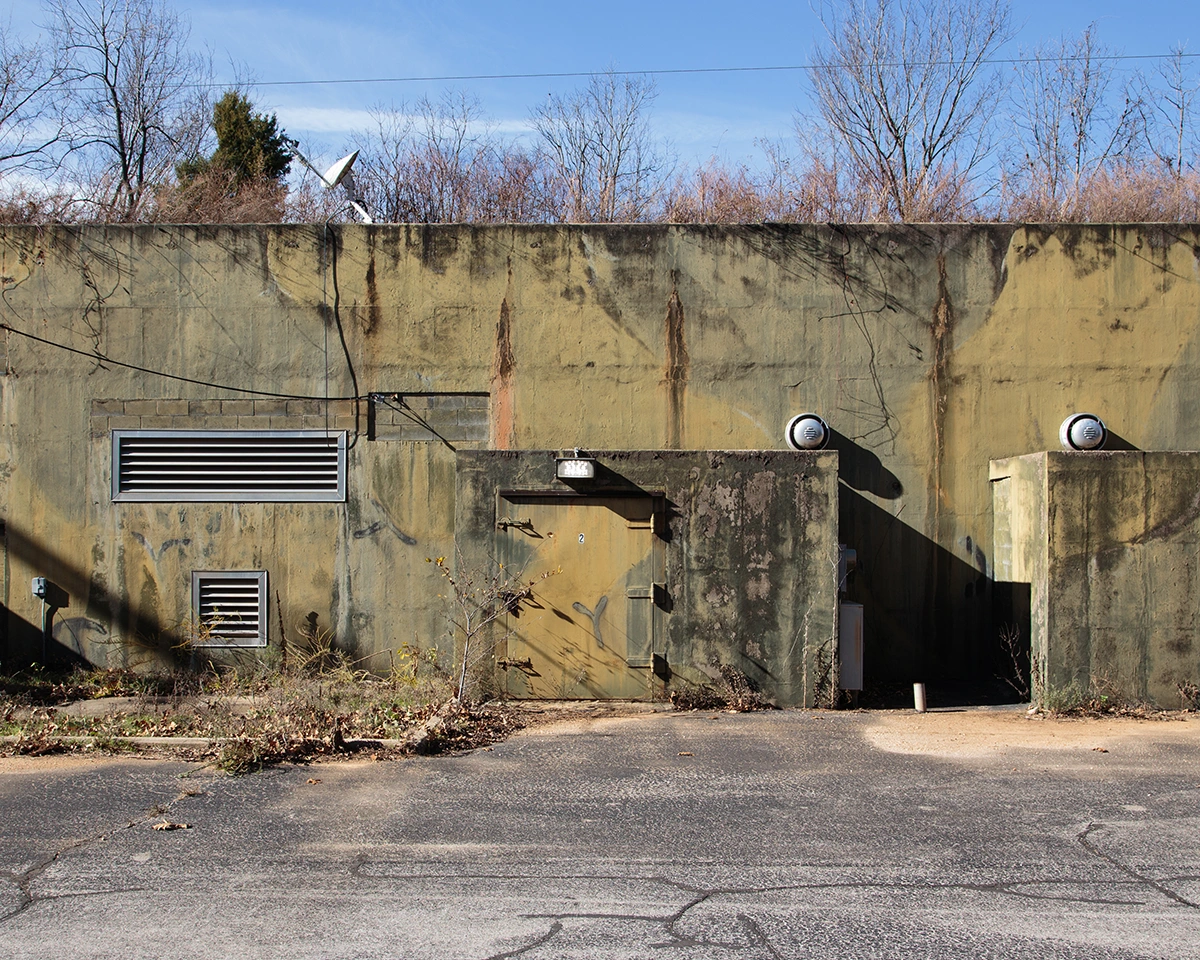
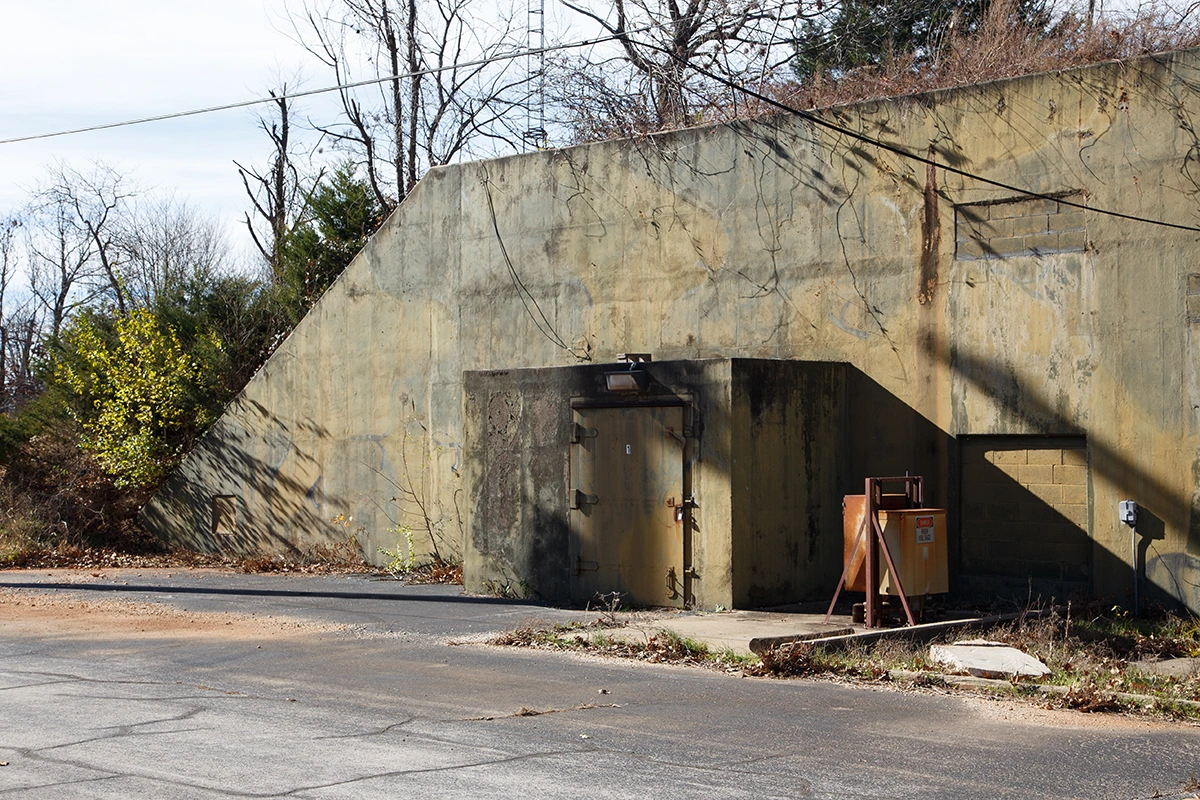
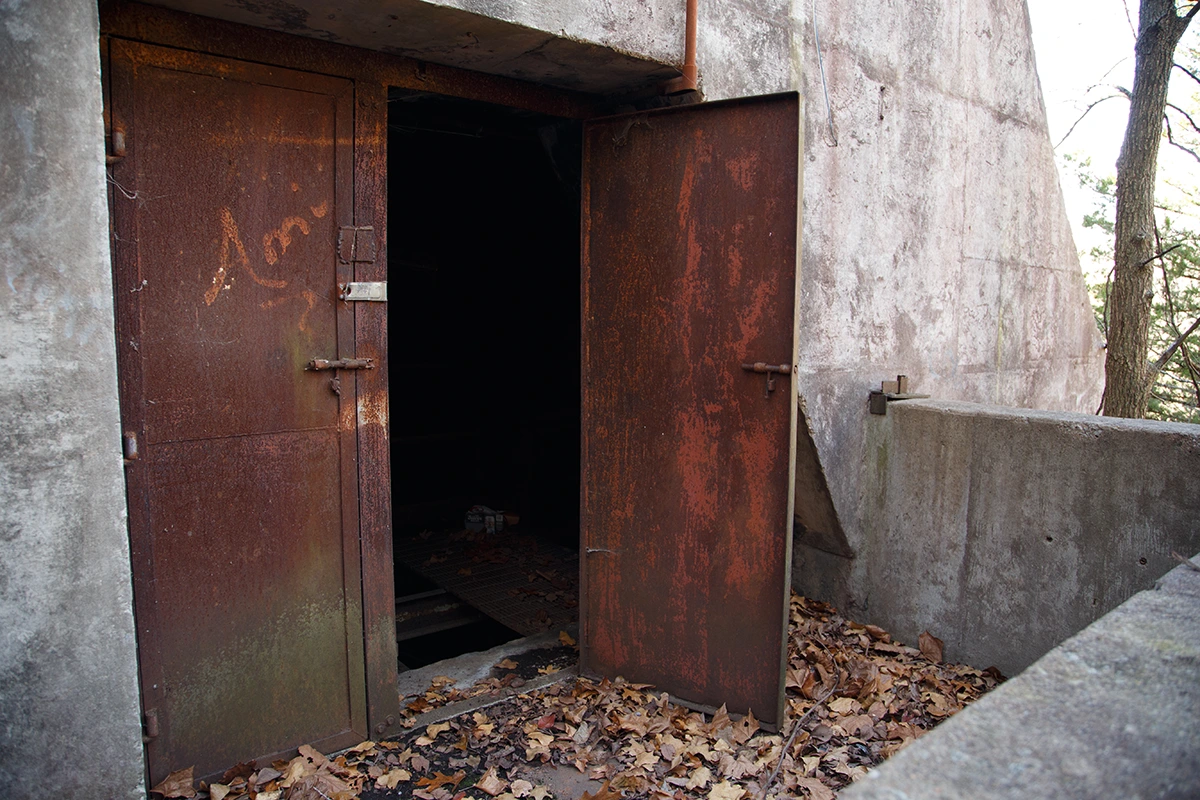
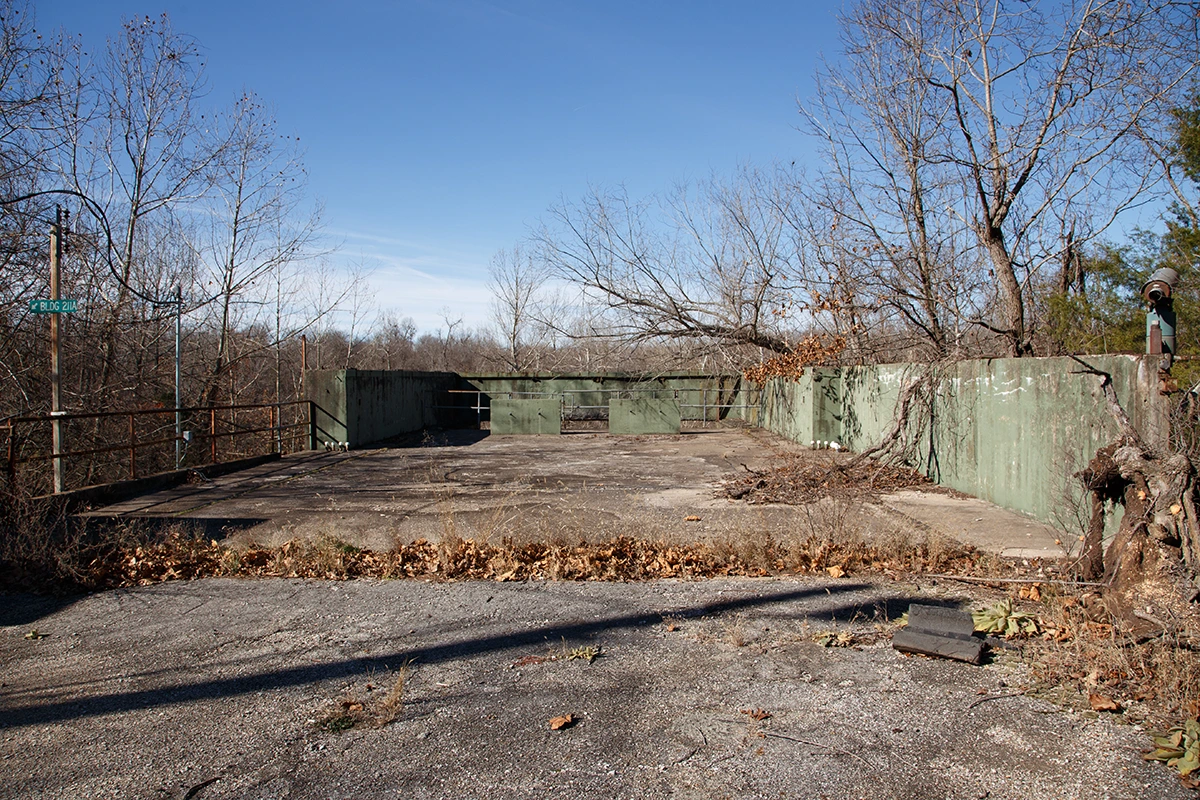
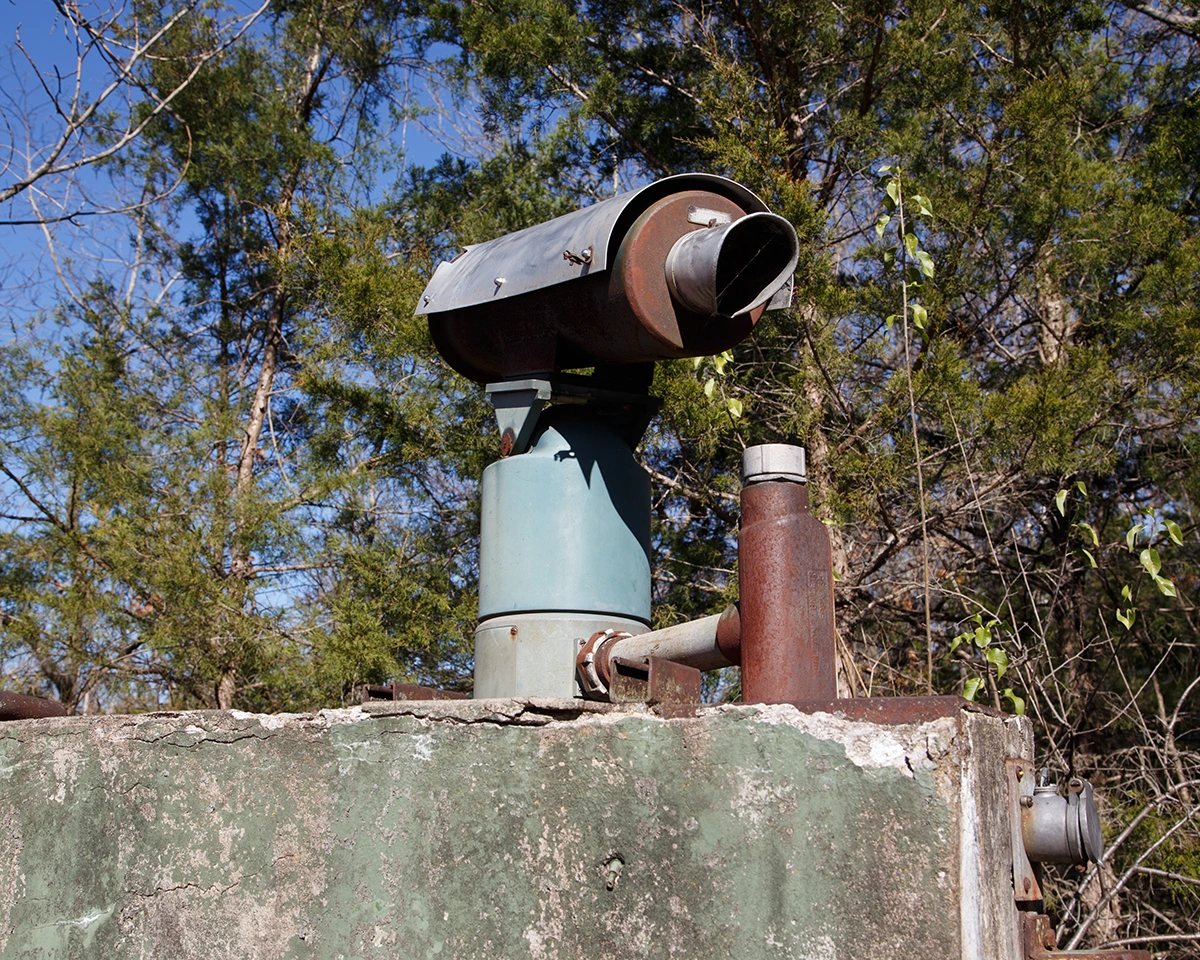
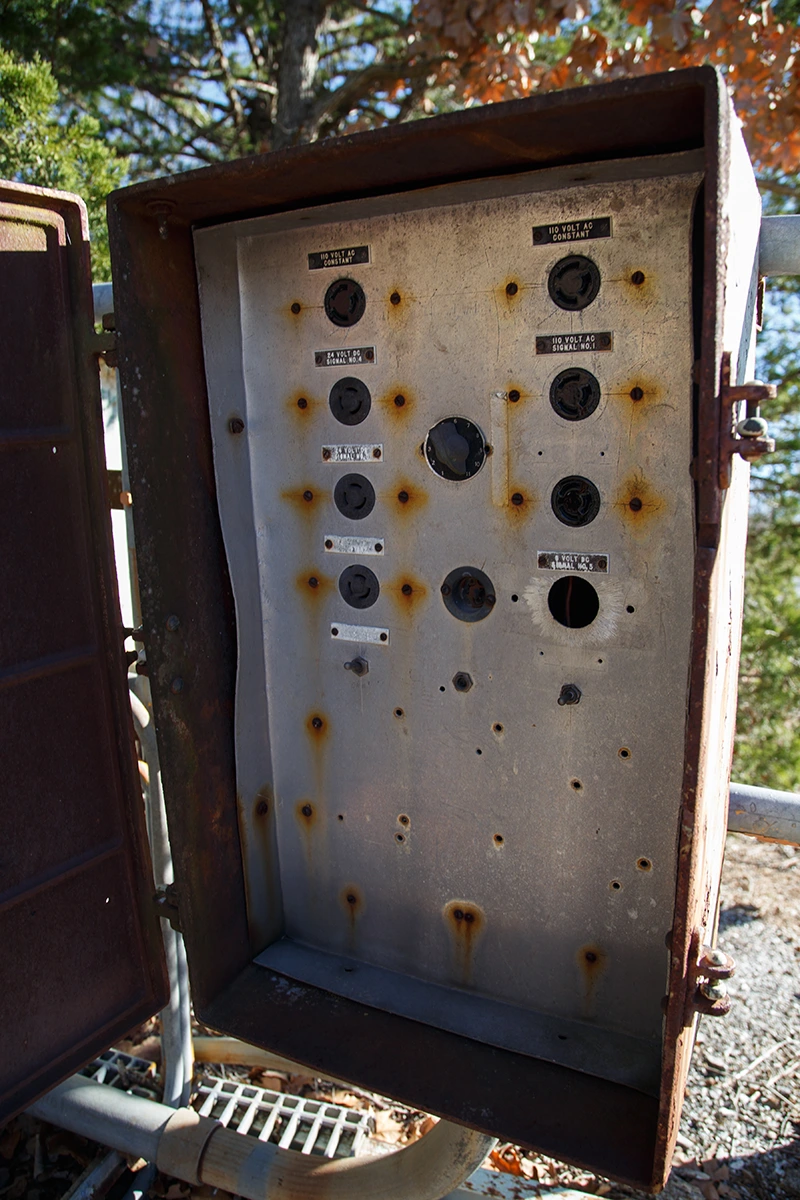
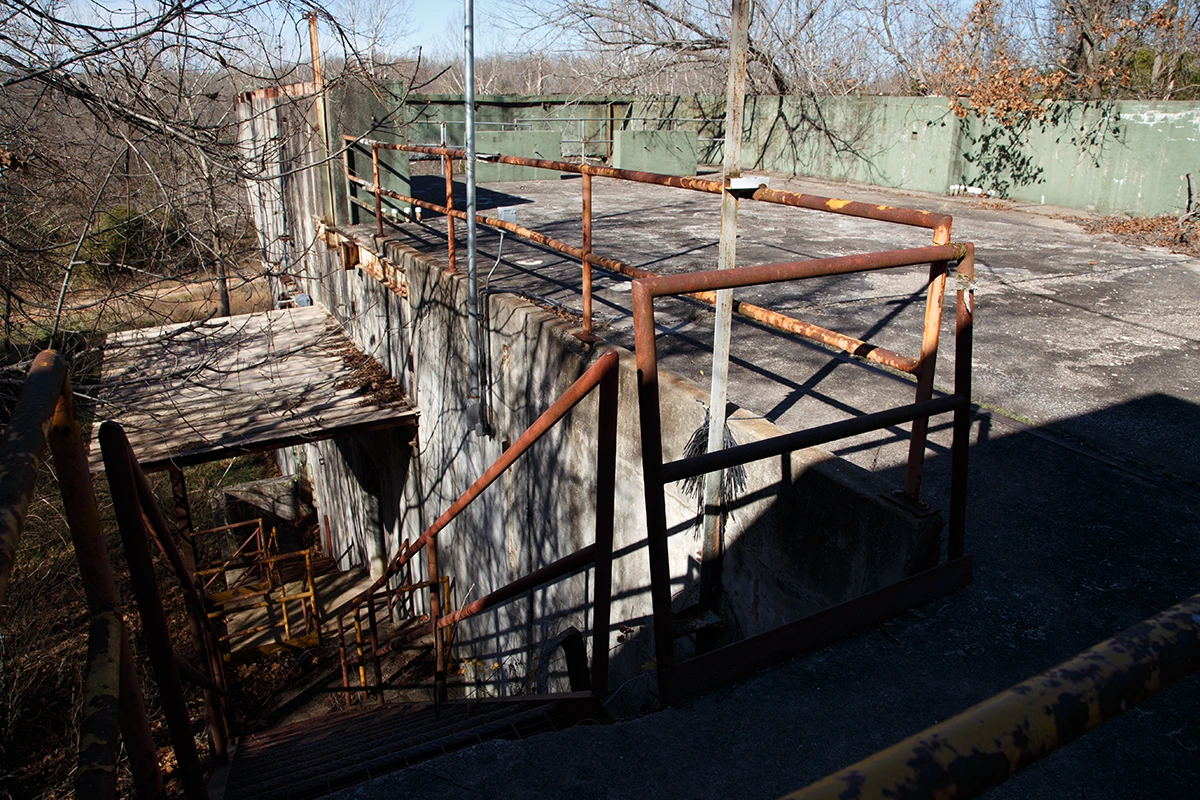
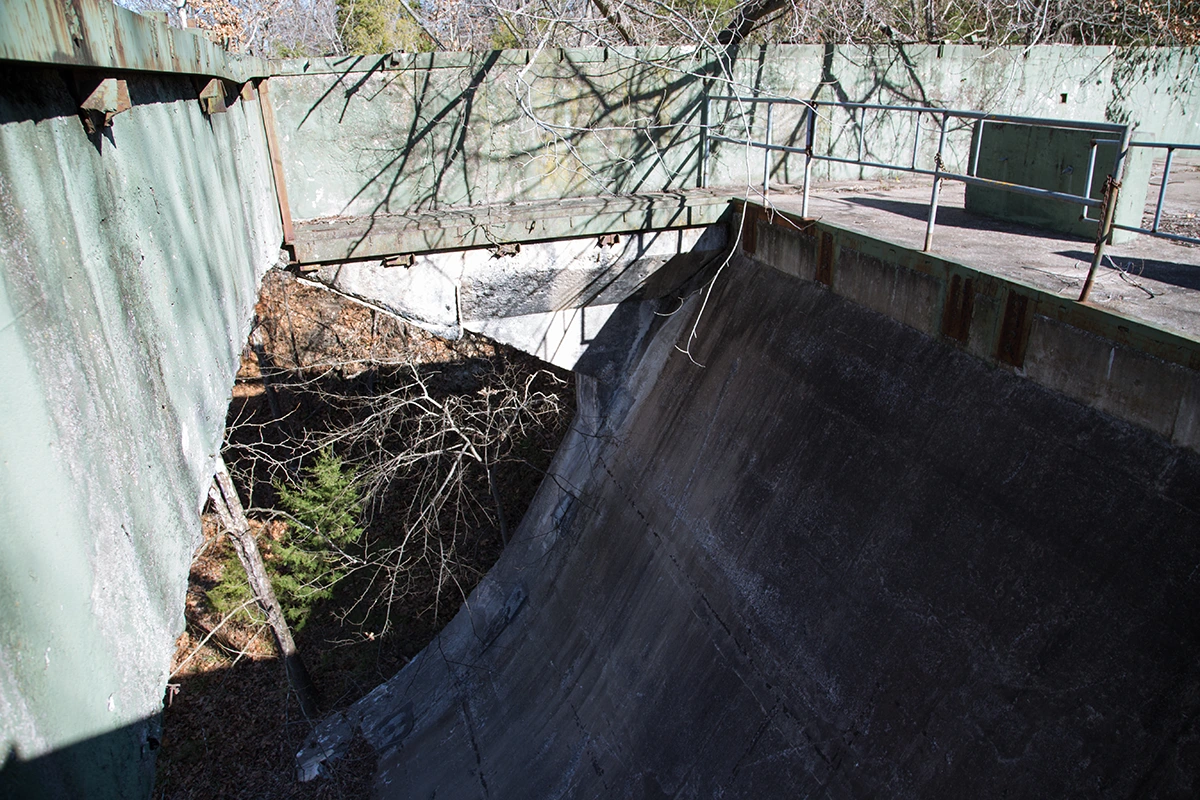
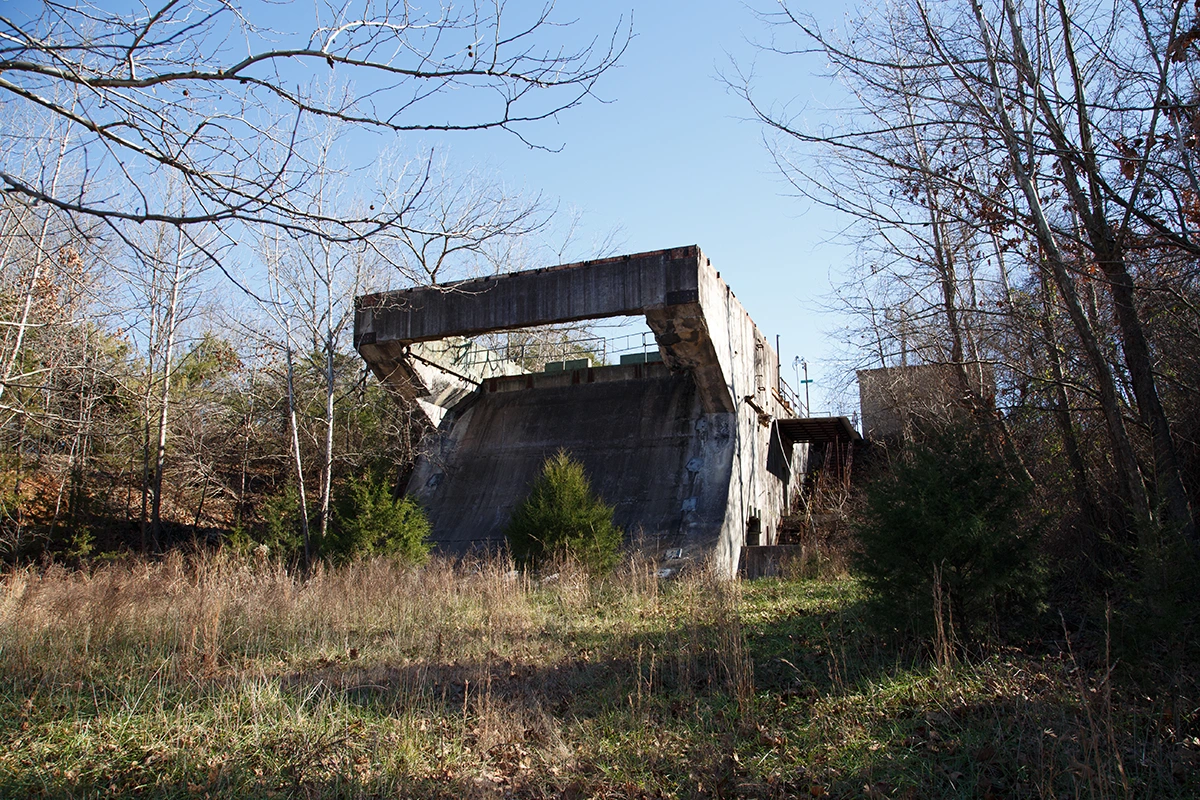
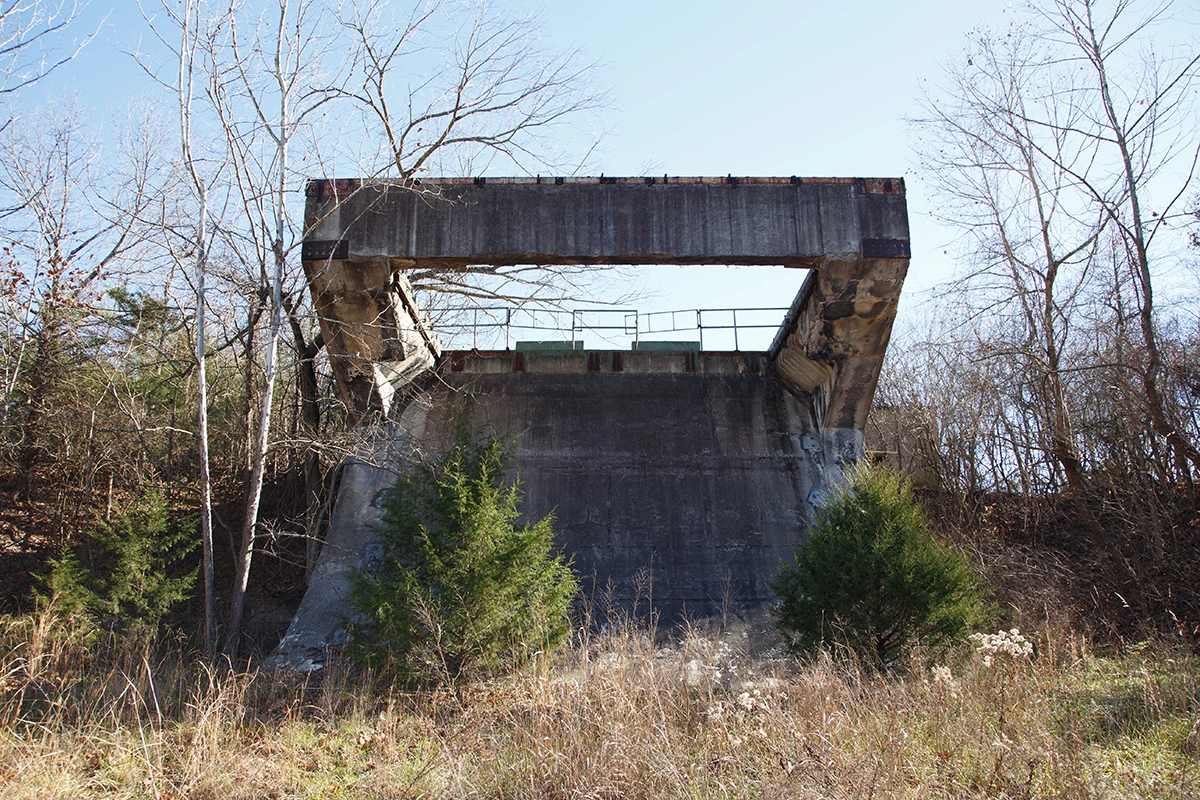
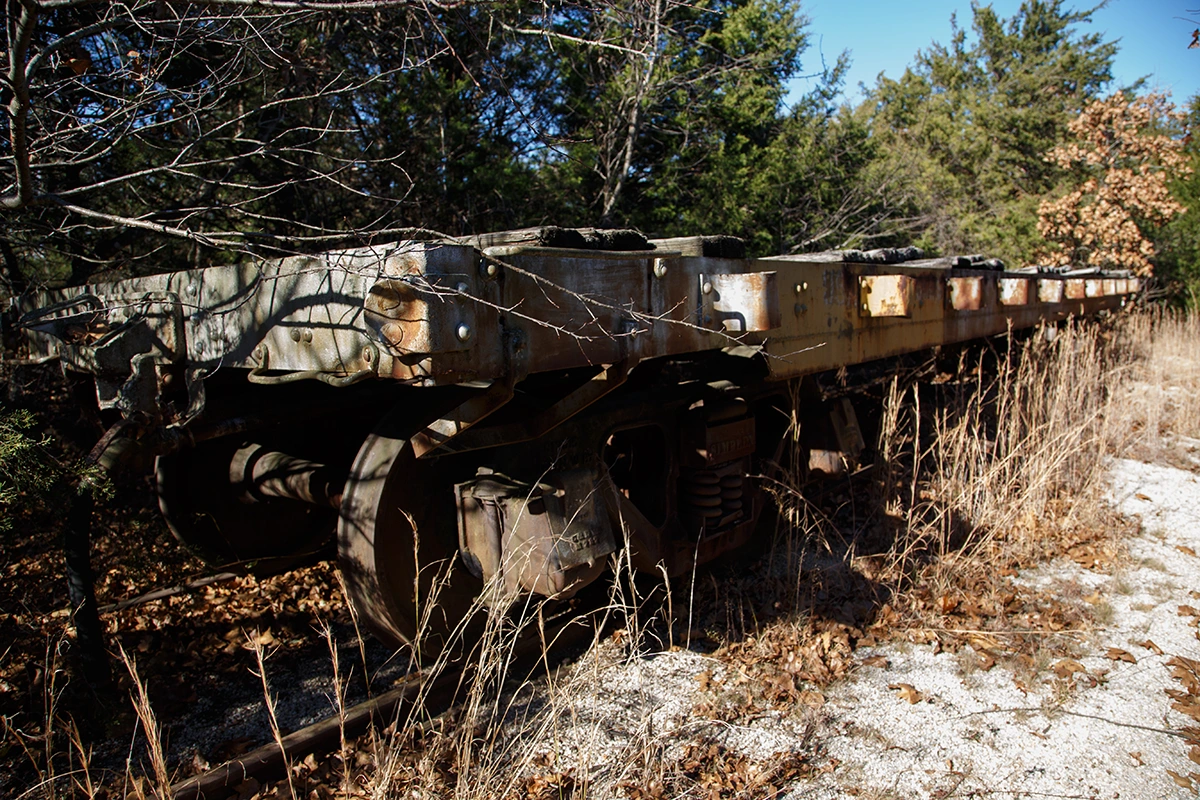

Labels: cold war, factory, government, historic, industrial, military, rockets, space
